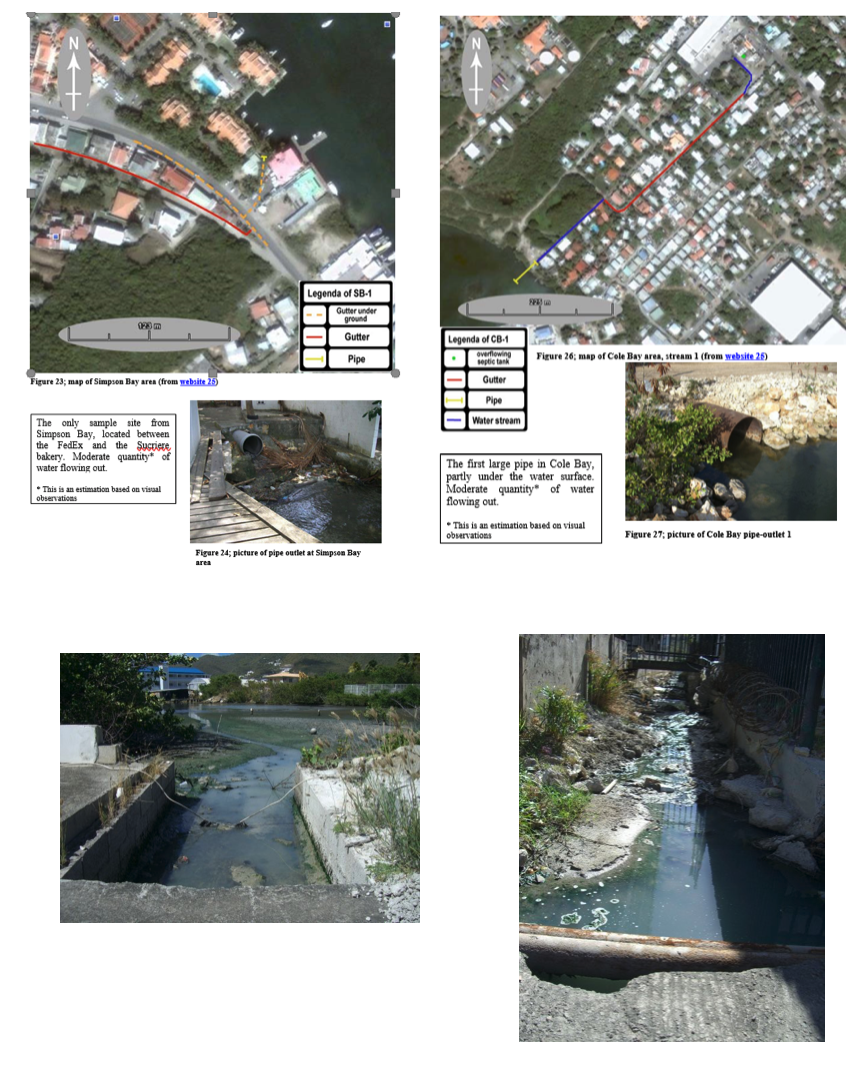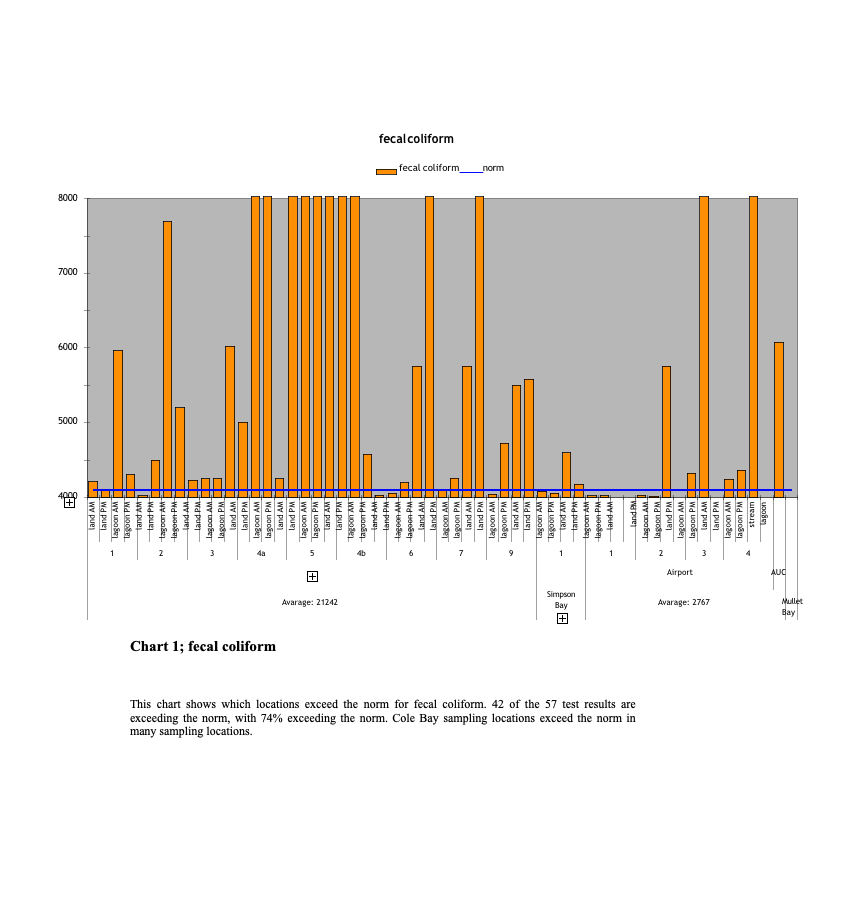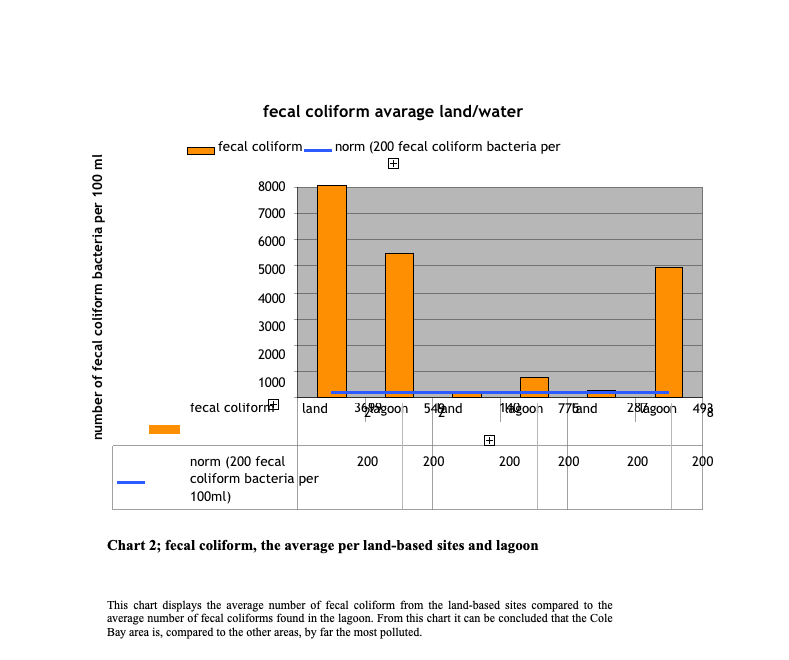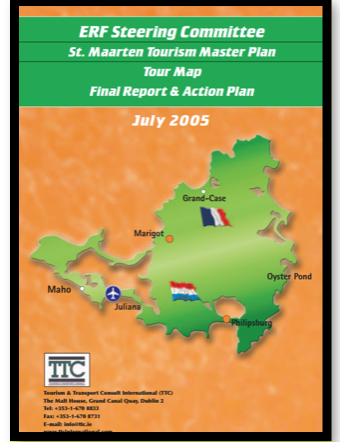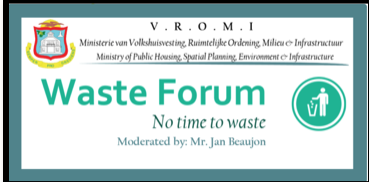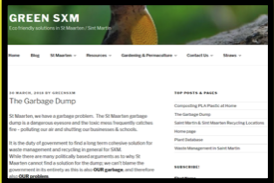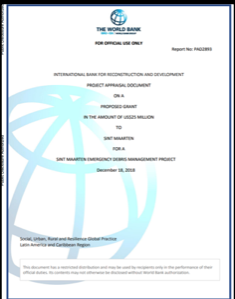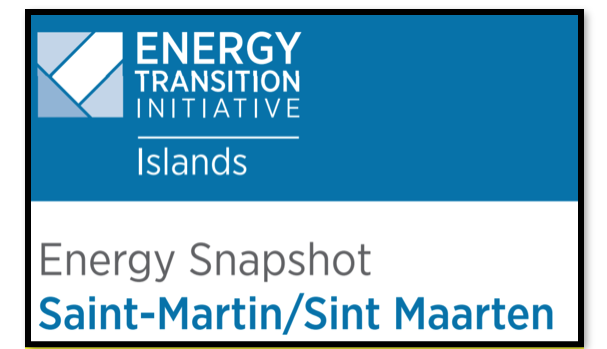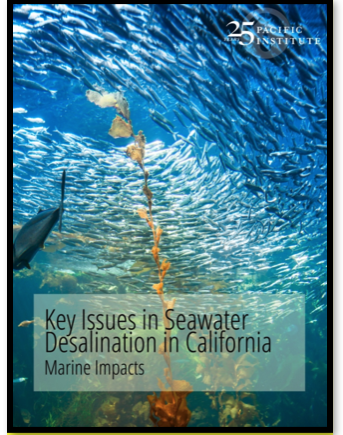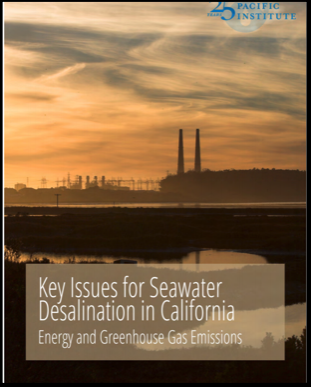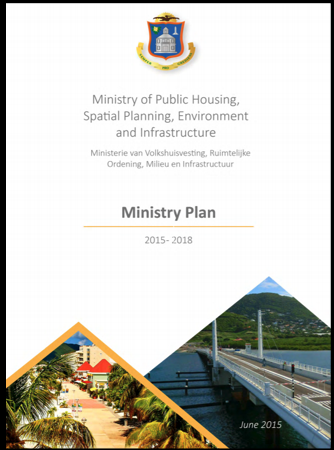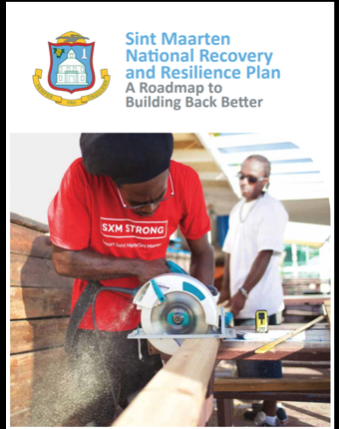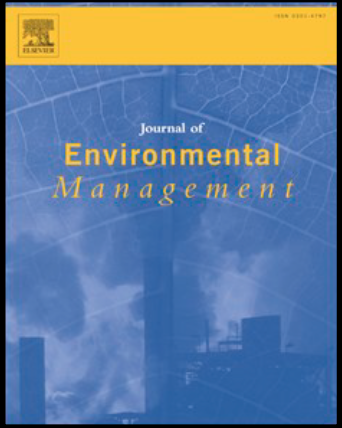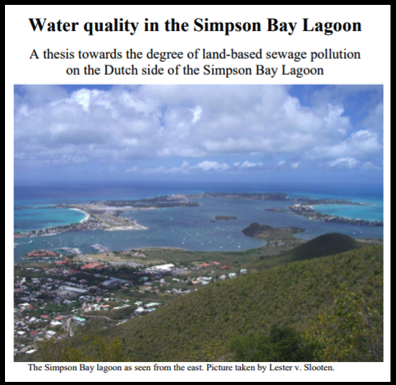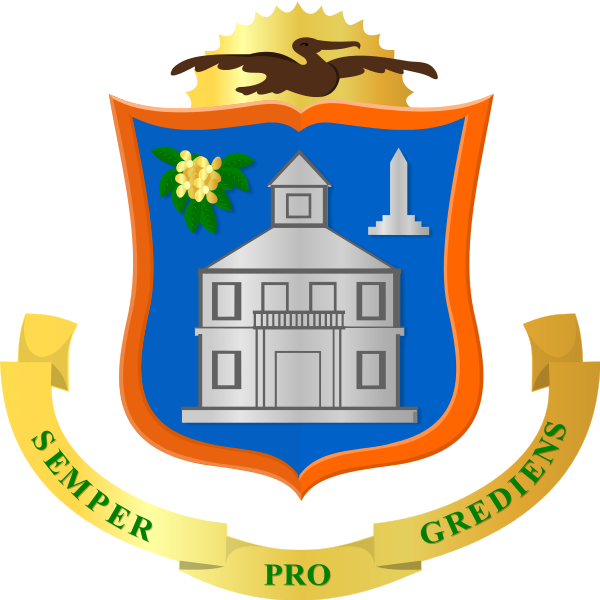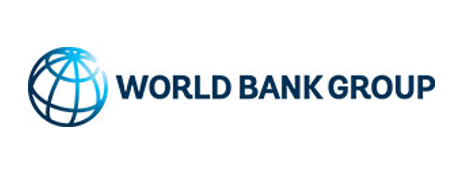Section 2: Key Themes and Sectors
HEALTH SERVICES
In terms of health service delivery, only primary and secondary care is provided in Sint Maarten by a mix of non-profit and private providers, as follows: the Sint Maarten Medical Center (SMMC), a non-profit foundation endorsed by the Government as the sole provider of hospital services in the country, 23 general practitioners (private), dental care providers, the White and Yellow Cross Foundation (primary care, nursing home and specialized ambulatory care), the Turning Point Foundation (drugs and rehabilitation), the AIDS Foundation, the Diabetes Foundation and 15 pharmacies, of which one is situated within SMMC (Cay Hill Pharmacy).
SMMC is the only hospital and the only source of secondary health services on the Dutch side of the island and is the primary source of care for the nearby islands of Saba and St. Eustatius. SMMC provides outpatient (emergency, radiology, dialysis and other special clinics) and inpatient care (medical pediatric and surgical wards, intensive care, labor and delivery, and an operating theater). No tertiary services are provided on the island and patients needing such services are referred to neighboring countries (Colombia, Dominican Republic, Puerto Rico, etc.). In addition to the permanent population, SMMC is available to provides services to approximately 2.6 million tourists per year (2 million cruise ship tourists and 0.6 million stay-over tourists).
The Ministry of Public Health, Social Development and Labor (VSA) is responsible for the legal, policy and quality framework for healthcare in Sint Maarten. In addition, VSA is responsible for setting the legally binding tariffs and tariff structure for healthcare, and the medical inspection and the approval of admittance of new healthcare institutions, medical appliances and licenses for doctors at SMMC. In addition, VSA includes a few public programs such as ambulance services and vaccination programs.
The Health and Social Insurance Fund (SZV) is mandated by law to administer and manage the National Health and Social Insurance Schemes. Established in 2010 under VSA’s oversight, SZV is an autonomous, and in principle self-sustained, administrative body responsible for implementing several social insurance schemes (illness, accident, general old-age, widow/widower and orphan, severance, and exceptional medical expenses). SZV is the main provider of healthcare insurance to civil servants and covers the healthcare costs of approximately two-thirds of the population. It is estimated that 15 percent of the population has private health insurance, and another 12.3 percent do not have health insurance. While the Government is providing medical aid programs to the uninsured, there is an ongoing effort for a health reform which aims to reduce out-of-pocket health expenditures and create a guarantee fund to cover the uninsured. In late 2017, The health reform package was submitted for the Council of Advice before going to Parliament for approval in late 2017, and is moving through the review processes, which have been somewhat delayed by Hurricane Irma.
Built in 1991 for a population of 23,000, the SMMC has surpassed its lifetime capacity and has weathered several hurricanes. The current hospital design is not functional. It has an open structure with five internal open-air patios that expose the hospital to severe weather and increase the risks to deal with hurricanes. After Hurricane Irma in September 2017, the SMMC suffered substantial damage and services were disrupted for several units, for example, intensive care and dialysis. The SMMC resumed operations immediately after the hurricane, due in part to provisional repairs carried out by the Dutch Marine engineering support unit. In addition, the hospital capacity and design (including 4 to 6 persons per room) do not provide options to rehabilitate or redesign the hospital to improve quality, reduce risk of the admitted patients and increase efficiency of health services. As a result of the limited quality and lack of services post-Irma, a substantial number of patients have been sent overseas for medical treatment, thus increasing the cost of health care to an unsustainable level.
To strengthen the healthcare sector on Sint Maarten, a Tripartite protocol (Tripartite) was established in March 2015 consisting of: (i) the VSA, (ii) the SZV and (iii) the SMMC. With its focus on achieving affordable and sustainable quality healthcare, the Tripartite declared that the existing hospital building was unsuitable for a complete re-design over the long-term. Given the Tripartite is focused on achieving affordable and sustainable quality healthcare based on the concept of ‘care close to home,’ it decided on the need to build a new general hospital before Hurricane Irma hit the island.
The new hospital plans to provide approximately 84% of the basic specialties, increase the number of beds from 66 to 110 and expand specific areas to provide more outpatient surgeries and other ambulatory services. Despite the increase, the ratio of beds per 1,000 people would still be relatively low when benchmarked with the Netherlands and other countries in the Caribbean. The existing hospital is located on the same land as the planned new hospital and will be gradually phased out once the new hospital construction is complete.
The pre-design of the new hospital considered not only additional capacity in terms of beds and ambulatory services, but also the need to incorporate new services, adding new diagnostic and treatment procedures, and new medical specialties. In September 2016, the selection process to hire a firm to design, construct and implement the new hospital was completed. This turn-key contract included full design of the new hospital, construction and equipment (medical and non-medical equipment), training (for equipment) and maintenance services for a 10-year period (with an option to extend the maintenance period for two additional periods of 5 years). By the time the complete design of the hospital was ready, damages caused by Hurricane Irma underlined the critical need for the new hospital to be designed with a structure and features that will increase the hospital’s ability to withstand category 5 plus hurricane level winds (200mph+).
In addition to the expansion in the scope of services, the new hospital will: (i) increase capacity from 66 to 110 beds; (ii) have 4 operating theaters and larger areas for ambulatory care, including a new flow of patients for ambulatory surgery; (iii) include critical characteristics to increase the resiliency of the hospital (external protection to withstand category 5 plus hurricanes, installation of modern and safe medical gas, greater storage capacity for having supplies for longer periods, underground communication through fiber optic capability, and a landing platform for helicopters for the transport of trauma patients, etc.).
The financing package for this New Hospital was approved in 2018 and construction was to begin in early 2019. Several contractual issues arose, and the construction has been pushed back to late 2019.
TOURISM
A Global Industry
A record 760 million international trips were made worldwide in 2018, generating approximately US$575 billion in tourism receipts. International travel and tourism are an important global economic activity, contributing a direct impact of 3.8% to international Gross Domestic Product (GDP), while sustaining almost 74 million jobs or 2.8 % of the world’s employment.
The tourism industry has a record of sustained growth with international trips increasing on average by 7% per annum over the past 50 years, while worldwide tourism expenditure increased by 11% annually. Global revenues from tourism grew consistently up to 2001. It is also noted that global recessions such as the period 2006-2009 caused significant downturn in the international travel industry.
Tourism has not only seen significant growth but has also shown a continued diversification in geographic spread and the range of products and experiences on offer. The international tourism industry has undergone rapid and radical transformation since the late 1980s. The principal consumer trends to emerge over the past 15 years relevant to Sint Maarten include:
- Consumers are considering more and more new holiday destinations, particularly long haul destinations.
- Consumers are taking more holidays even though they do not necessarily have more time off or more money than in the past - resulting in consumers taking a greater number of shorter holidays more tailored to specific needs and interests.
- Changing motivations for travel, for example holidays meeting particular needs, have resulted in greater segmentation of the travel market.
- Mass marketing is giving way to more individually tailored holidays.
- Growth of the ‘grey-hair market’ as a share of the total market.
- Sun/beach holidays continue to grow but are increasingly combined with other activities.
- There is increasing demand for activity, soft adventure and interest holidays.
- There is a greater price and value for money awareness among consumers, i.e. more experienced travelers with heightened quality and value expectations.
- Greater consumer use of modern information and distribution technology.
- Consumers are booking holidays later than ever before and impulse buying is increasing.
- Consumers have looser working arrangements than ever before, particularly in Europe.
While the nature and structure of international tourism is undergoing fundamental change, the future prospects for the industry are very positive. International tourism and business organizations all forecast continued growth in demand for leisure and business travel, although the rate of growth and travel patterns will vary by region and over time.
The tourism industry in St. Maarten has demonstrated a strong record of success – with uninterrupted growth from the 1970s through the 1990s and, more recently, with a strong recovery from the impacts of 9/11 and the latest major hurricane Irma of 2017. The challenge for tourism in St. Maarten is to build on that success and to respond effectively to the changing market trends. Chief among these trends are increasing competition, changing customer profiles, vacation needs and value consciousness.
Sint Maarten Tourism
The Sint Maarten tourism market consists of several key categories as discussed below.
Stay-over Tourism
Stay-over visitors are the backbone of St. Maarten tourism accounting for more than 60% of overall tourism expenditures. Stay-over visitors include holiday visitors, those visiting for business and those visiting friends and relatives. Stay-over tourists using accommodation on the Dutch side of the island accounts for up to 70% of total stay-over visitors arriving through PJIA.
Cruise Visitors
Cruise tourism has been seen as the major success of St. Maarten’s tourism industry over the past 2 decades. Cruise demand has been rising steadily. In 2003, St. Maarten was one of the top 10 ports of call in the world and in the top five ports of call in the Caribbean. Cruise tourism to St. Maarten has increased steadily to a high of 2 million in 2016 before Irma.
Direct expenditure in St. Maarten from the cruise ships is estimated to be in the region of US$140 million, of which almost two-thirds is spent on shopping (mainly duty free goods). Cruise tourism expenditure in St. Maarten accounts for roughly one in every five tourism dollars spent on the island. Cruise visitors, due to concentration of demand (by location, time of day, day of week, and time of year) tend to place greater strain on infrastructural and other resources than residents or stay-over tourists. Cruise visitors can add the equivalent of almost 5,000 to the population per calendar day during the winter, with certain heavy cruise ship visits adding as many as 25,000 passengers and 5,000 crew.
Yachting Visitors
The yachting sector has been one of the fastest growing segments of tourism in St. Maarten in recent years. Yachting and the related marine leisure sector are an increasingly important component of the business and economic life of the island. St. Maarten has experienced a rapid expansion of yachting and related activity and now ranks as one of the top centers in the region (prior to Irma and 2017). Inadequate statistical data and the rapid growth of the sector result in an under evaluation of the economic contribution of the yachting industry.
The Simpson Bay marinas used in the yachting survey report a total of just under 250 docking slips (with 175 of 100 ft or longer and 22 in excess of 200 ft.) between them and average slip occupancy in the high season of 85%+. The Heineken Regatta, which takes place annually in St. Maarten, is now the biggest sailing Regatta in the Caribbean. In tourism terms it is significant in the numbers of participants approximately 250 boats, involving around 2,000 crew and support personnel and a similar number of supporters. It is an international event which is of significant benefit to St. Maarten’s tourism image.
Day Visitors
Day Visitors include residents and visitors on nearby islands, and technically those residents or staying on the French part of the island, who visit St. Maarten for whatever purpose, other than permanent employment, but stay less than 24 hours. Due to the island’s location and its role as a transport hub, trade and commercial nexus, and its administrative relationship with both Dutch and French island groupings, it is likely that there is a relatively high incidence of inter-island travel by residents on a day trip basis. In addition, because of the links by air and sea there is an opportunity for day trips to and from St. Maarten / St. Martin by visitors to the islands. Day visitor traffic between the islands is an important economic component of the island’s tourism and has a particular significance with regard to the economics of the provision of inter-island transport services.
In the mid-1950s, the St. Maarten hotel accommodation capacity was limited to the five-room Seaview Hotel, three-room Passangrahan Royal Inn, and 24-room Little Bay Beach Hotel. Let’s go back 40 years to compare the Sint Maarten tourism situation. As reported by S. Lowes (1977), the only real town on the Dutch side of the island was Phillipsburg, and the island had a population around 11,000. The island, in 1977, received more than 160,000 overnight stays and an additional 100,000 cruise ship passengers for one-day shopping sprees. In that period a by-pass road was built on filled-in saltpond land to relieve the traffic congestion in Phillipsburg TownCenter.
Sint Maarten evolved into a major tourism destination by the early 1980s. Tourism had taken over as the main source of revenue for the population. Successive tax exemption laws (Pons, Paul, Robien Besson and Girardin) contributed to this economic boom. The tourist economy reached new heights in 1994, with over 600,000 visitors coming through Princess Juliana Airport. In 2007, over 1,430,406 cruise ship passengers came through the deep water port at Great Bay (Dutch side). In 2007, over 2 million people visited Saint Martin. (Source: IEDOM).
The two key attributes for cruise tourism is the Sint Maarten cruise ship terminal and Simpson Bay Lagoon Authority. The port facilities have been the catalyst for the improvement and development of different areas of the island. The transportation network was improved by the completion of the Simpson Bay Lagoon Causeway in December 2013. The construction of this causeway eased traffic congestion for tours as well as for individual beach-bound passengers.
The Simpson Bay Lagoon is a haven for yachting and home to a large number of mega yachts, and also home to the Simpson Bay Lagoon Authority (SLAC). The Lagoon Authority is responsible for managing the Simpson Bay Lagoon (St. Maarten side) as well as the operation/maintenance of the bridges; collection of fees; with future prospective for planning, stimulating, executing, facilitating, coordinating, improving and managing on principles of business economics of the infrastructure and facilities of recreational. The Lagoon Authority also strives to enhance and improve the environment of Simpson Bay and the Lagoon. SLAC also promotes the destination as one of the top yachting ports of call in the Caribbean.
On June 3, 1964, that A.C. Wathey Pier in Pointe Blanche was inaugurated. Thereafter, cruise tourism slowly started to grow over a period of 16 years as the global cruise industry started to develop, and in 1980 the island welcomed 105,000 cruise passengers. As the industry continued to grow, the destination hit the 1,000,000 cruise passenger mark in 2002, and thereafter has catered to more than a million cruise passengers for the past 17 years.
The development of the harbor facilities over the past 55 years started off with one company and now encompasses 13 companies with more than 70 employees responsible for most of the country’s maritime-related activities. The operations are also broken down into four pillars: cruise, cargo, yachting and real estate. Port St. Maarten Group of Companies has diversified its activities into real estate ownership and port consultancy, as well as owning and operating the port’s two mobile harbor cranes. Some 55 years later, St. Maarten is a successful cruise destination, due to its approach of listening to the cruise lines and understanding the business which has grown by leaps and bounds.
The first hurricane causing unprecedented destruction at the time was 25 years ago, when Hurricane Luis (1995) caused devastation to the island’s infrastructure. After a period of planning and development, the first cruise pier, Dr. A.C. Wathey Cruise Pier South (545 metres in length) capable of accommodating four cruise ships simultaneously, was put into operation in 2007, one of the few ports at that time that could receive the world’s largest cruise ships.
Port Perspective
Fast forward to 2019: The country of St. Maarten, represented by the Minister of Tourism and Economic Affairs, is the sole shareholder in the Port St. Maarten Group of Companies. The Companies have been incorporated since the early 1990s, with the first cruise ship was received on St. Maarten in 1964. Imagine, that first cruise had to anchor in the bay, passengers were brought ashore on small boats, and the local population in their private cars showed them the island because there was barely any tourist infrastructure. As more visits took place, cruise lines showed increased interest in St. Maarten, and the first government-owned company fully directed to cruise tourism was formed. The Group expanded in the late 1990, when the first cruise pier was built. Until then, cruise ships anchored in the bay. In 2009, the second cruise pier was built, and both are still managed by Port St. Maarten Group of Companies, today. The piers can berth six cruise ships; two of the world’s largest, Genesis-class and four ships up to 140,000 tons. Port St. Maarten’s other operations include cargo, real estate (the rental of stores on port premises), and yachting. In addition, there is one berth for giga-yachts, vessels are so big that regular marinas can hardly accommodate them.
As for cargo, the company is the sole cargo port for St. Maarten, operating the mobile cranes to take out the containers from the cargo vessels, and then third parties distribute them inland. Simpson Bay Lagoon Authority Corporation (SLAC) is mostly known for its yachting marinas and is another part of the Port St. Maarten Group. It manages the two bridges in the lagoon and has advisory roles with government for developments.
Revenue realized by the Port, itself, is evenly split between cargo and cruise, but the cruise industry is much more important to the local economy. The country is 90 percent dependent on tourism, and more than a third of the GDP is generated from cruise and cruise-related business. The Port St. Maarten Group has about 80 direct employees, but those in service are sub-contracted. In total, over 1,000 people on a daily basis find work on Port premises.
Direct Irma Impacts
For St. Maarten and its people, the emotional impact of Irma was the worst, though, the effect continues to be felt, economically, as well. The Port, alone, had $13 million in direct damage and business interruption is estimated at $25 million. Nonetheless, Port St. Maarten is about a year ahead in cruise recovery, based on projections. For 2018, the total number of passengers was 1.7 million, and in the latter half of the year, numbers were back up to pre-Irma standards. Thanks, in no small measure, to a great collaborative effort between local stakeholders, the resilience of the St. Maarten people, and the trust and confidence received from all the major cruise lines. As for current challenges, the Ton van Kooten, Managing Director of the Group, states, “A lot of the shore access is in the hands of small operators and they are lagging a bit in recovering their product, based on damages they have from Irma. We also see a bigger desire from visitors to immerse themselves in culture and history, and the private sector here is slowly adapting to those changing tastes. We have to move away from the traditional shopping and beach – those are nice basic elements, but you need to offer more. As a resort destination port, we are facilitating the process; making sure that local stakeholders just cruise tourists, it’s the same for stayovers.”
A Sustainable Future Port Operation
To enhance the cultural focus, a new commercial development plan for the Port is being rolled out to create a Central Park for exhibitions of local history, such as artefacts from the early salt mine industry in St. Maarten. Next on tap are the plans for Port facility infrastructure improvements. After two decades, a fresh look is in order, as well as a great deal of maintenance beyond the yearly routine work. Increased volume, closing in on two million people, requires optimizing passenger flow and traffic on port premises, feeding it onto the island. Those items are in the planning phase, now with the underlying themes are a “smart” and “sustainable” Port. From a sustainable point of view, the Port is serious about renewable energy sources. There was some solar but not enough consisting of six smaller turbines that were destroyed during Irma. Currently, the Port Authority is looking to a bigger, 250 kph windmill capable of generating between 0.7 and 1 Mw power per year – about half of our Port’s energy consumption. A big concern is making sure that the blades on the windmill can be lowered during stormy conditions.
Tourism Trends
Back in the entire 2014/2015 cruise year, the estimated 1.85 million cruise passengers who visited St. Maarten spent a total of $354.7 million ($US) and the estimated 377,390 crew who visited St. Maarten spent an estimated total of $45.0 million ($US).
Port St. Maarten welcomed 1,597,101 cruise passengers on 489 cruise calls in 2018, a 29 percent increase from 2017. Though 2017 was generally a slower year because of Hurricane Irma, the port still experienced significant growth in the latter half of the year when compared to a similar period in 2016.
Due to Hurricane Irma, Port St. Maarten was not operational in October and November 2017. But, based on its arrival data, it looks like the cruise port has bounced back. It saw a 30 percent increase from May through July, when cruise visitations are generally slower. By the latter half of 2018, it had returned to pre-Irma cruise arrival numbers. Port St. Maarten welcomed 646,431 passengers from September to December, an 18 percent increase from the same period in 2016.
The record day for St. Maarten saw six cruise ships moored at the port’s two piers with one other ship at anchor in Great Bay. There were 26,900 passengers on the seven ships to go along with 9,900 crew members. Celebrity Edge, Celebrity Silhouette, and Marella Explorer all enjoyed late night port stays and had the opportunity to sample some of the nightlife activities in Philipsburg and along the Beach Promenade.
Port Sint Maarten websiteKey issues and challenges facing St. Maarten with regard to tourism
In 2005, the tourism sector in St Maarten commissioned an important study called the Tourism Master Plan -TourMap to capture and identify trends and design a forward looking vision. The Tourism Master Plan was intended to provide a framework to assist the people of St. Maarten - residents, government and the business community – to anticipate and plan for the future development of the tourism sector to the benefit of all. The process involved numerous tourism partners, community councils, youth organizations, government officials and representatives from the neighboring Leeward Islands.
The fundamental appeal of St. Maarten is nature-based – scenery, topography, the ocean and the natural attractions of the island. As such the destination and the quality of the experience which it delivers are extremely sensitive to the quality of the environment. Almost two thirds of tourism stakeholder respondents considered that the tourist industry on St. Maarten is not sufficiently conscious of the relationship between the environment and tourism. For many tourists, a high priority for their experiences (based on extensive surveys and opinion gathering) is good environmental practices including:
- Protection of the natural environment.
- Waste management/pollution.
- Land use planning.
- Visual pollution.
Emerging from the consultations and interviews with tourism operators in Sint Maarten were the principal concerns:
- Unregulated development and encroachment of coastline and hillsides.
- Marine and waterway pollution, including the Salt Pond, the Lagoon and bays.
- Litter, rubbish collection and dumping, disposal of used vehicles and batteries etc.
- Visual pollution – advertising hoardings, building designs incompatible with surroundings, etc.
- Vehicle emissions and noise pollution.
Only one out of four tourism operators consider the performance of government to be ‘adequate’ or better in regard to protection of the environment.
These findings strongly point to the opportunity for the tourism sector to project a more pro-active role in this critical area. In the Sint Maarten Land Parks Management Plan Report of 2009, the sentiment around conclusions of the TourMap are captured below.
Tourism, which is the primary source of income on St. Maarten, often fuels or in some cases is the sole catalyst of many of these issues, when improperly managed. Traditional tourism management can cause many negative social and environmental impacts and in so doing threatens the tourism industry’s prospects for continuous prosperity. Over- and improper development destroys mangroves and wetlands, yachts and divers damage coral reefs, and hotels and cruise ships often discharge raw sewage into ponds, lagoons and the sea. It is of vital importance to a tourism destination that nature and environment are healthy and well maintained. Tourists are drawn by the island’s biodiversity and unique natural and cultural characteristics. The preservation of these aspects all depends on a clean environment. A polluted environment or lack of natural values, if not properly addressed, could in time lead to the demise of tourism. While improperly managed tourism development often has negative impacts on the environment, tourism can also pay a significant contribution to environmental protection when managed in a sustainable manner. This emphasizes the fact that tourism and environmental protection are interrelated and co-dependent.
The implementation and enforcement of proper environmental legislation, planning and assessment procedures are important aspects of environmentally sustainable tourism development. In order to achieve a sustainable balance between environmental protection and tourism development Sint Maarten’s Government Departments (VROM, ROB), Environmental as well as Community based NGOs and community representatives should have a more prominent role in deciding which opportunities for tourism development can be sustained over the long term. Acceptance of the limits to development due to the lack of space, the carrying capacity of the island’s natural resources and the need for sustainable action should be a guiding principle in the management of St. Maarten’s tourism development.
The solid waste situation in Sint Maarten has been a burden for several decades. The government over the years has failed to give enough attention and means to deal with the waste problem. Only 0.5% of the government budget is generally allocated to manage the landfill. This financing shortage cannot support a professional and sustainable waste disposal solution for the jurisdiction. In addition, the introduction of a waste collection levy has been politically unfeasible.
Debris is managed by the Ministry of Public Housing, Spatial Planning, Environment, and Infrastructure (VROMI), which also manages solid waste collection and disposal services. VROMI collects the debris through a series of private sector contracts and is responsible for its processing and disposal on Pond Island near Phillipsburg.
The Ministry of Public Health, Social Development, and Labor (VSA) also plays a role in debris management through the clearance of debris to reduce risks of mosquito-borne illnesses. VSA currently runs a program that uses health volunteers to educate the population about mosquito breeding grounds, including ways to prevent discarded containers and trash from becoming breeding grounds for mosquitos. As part of this process, they identify potential breeding grounds for mosquitos and share this information with VROMI, which then picks up the debris and containers from the identified areas.
Over the years, waste management at the municipal dumpsite has suffered from a longstanding absence of separation, recycling, and proper processing, and insufficient compacting and coverage of waste on the landfill, leading to the development of substantial risks, including a smoldering underground fire. This fire causes regular flareups with significant negative impacts on the living environment of the population in the island and on the economy.
The problem of the open landfill precedes Irma and was exacerbated by the hurricane. The hurricanes left debris scattered across Sint Maarten and the subsequent demolition and reconstruction activities added to this quantity of debris. It is estimated that over 100,000 m3 of hurricane debris has been collected and stored either at a temporary storage site near Phillipsburg (Pond Island) or disposed in the municipal waste disposal site which is located adjacent to this site. It is estimated that an additional 100,000 m3 of debris, including hurricane debris and debris from the reconstruction activities post 2017.
The increased flow of debris directly caused by the hurricane and from the post-disaster demolition and reconstruction activities has made the situation worse. The pressure of additional debris has compounded these risks and led to more frequent flareups to the surface of the dumpsites, regularly impacting the neighboring areas with smoke and odors. This has further exacerbated environmental and social risks and increased the costs for its proper management. Limited final treatment, disposal, and recycling of the debris has also resulted in accumulated debris in temporary storage and inadequate disposal, with concomitant health and environmental risks.
The Pond Island includes two sites receiving debris from the hurricane and its recovery: (i) a temporary storage area designated for debris from the hurricane and its reconstruction which includes an area where metal processing is ongoing and where automobiles are stripped of metals and crushed and processed; and (ii) the municipal waste disposal site, where debris is mixed with household and commercial waste and where processing of cement and stone debris is ongoing. A preliminary assessment revealed fires below the surface of the sites, with temperatures exceeding 300°C. Risks from such subsurface fires include: (i) creation of unstable areas (crevasses and pits) that could result in the movement and collapse of the slope; and (ii) air quality degradation from the smoke from smoldering waste and the related odor emitted from the site.
The continuing challenge and proposals for solutions has economic, social, health, and environmental benefits for Sint Maarten. Specific areas of concern and attention are highlighted below.
Tourism
Incomplete debris collection and improper management of debris is affecting the recovery of tourism on the island post Hurricane Irma and may affect the attractiveness of the island for tourists in the long term. Studies have shown that litter and debris in beach resort areas such as Sint Maarten affect people’s willingness to return to a beach or country. Fires at the municipal waste disposal site and the temporary debris storage site directly affect the environmental quality of Phillipsburg, where the cruise ships dock and where much of the on-island tourist attractions are located. During a recent fire at the municipal waste disposal site, a cruise ship threatened not to dock and a major tourist attraction nearby (a zipline adventure) remained closed for a few days.
Health
Debris and debris management in Sint Maarten are increasing health risks due to: (i) poor air quality caused by the fires at the municipal waste disposal site; and (ii) disease impacts, as the uncollected debris provides a breeding ground for mosquito vectors.
Of the 1,500-plus people who live in Phillipsburg, many are exposed to smoke from the burning waste. An emissions study has shown that the emissions from the smoke on top of the waste sites contain toxic organic compounds (including benzene, dioxins, and furans) along with particulate matters exceeding international occupational standards. Exposure to unsafe levels of these compounds have been shown scientifically to be correlated with lung cardiovascular, and other diseases. An assessment of the cost of these impacts is not currently available, but it can be assumed that compounded impacts on health and correspondent costs over time could be significant.
Studies in the Caribbean have also indicated that uncollected debris near houses accounts for between 10 percent and 20 percent of breeding habitats for Aedes aegypti and Aedes albopictus, mosquitos that carry dengue, chikungunya, and the zika virus. Published estimates indicate that these viruses together cost Sint Maarten over US$20 million per year in annualized health costs. As visitors avoid countries with these outbreaks, tourism is estimated to decrease between 3 percent and 4 percent in those years.
Recycling revenues.
Introducing procedures for separate collection, organization, and processing of debris materials will have further economic benefits for Sint Maarten, as it will allow certain material to be sold and reused with some financial gain, including for example, concrete and metals. Using the upgraded procedures, an estimated 2,000 tons of metals could be sold from the uncollected hurricane debris, as well as construction and demolition debris.
In addition, the debris that remains on public and private properties is causing problems at multiple sites: where it has fallen and continues to lie, the debris is making reconstruction more difficult. The lack of comprehensive arrangements for processing and final disposal has left the debris to continue to accumulate, increasing these risks.
Also, the destroyed and abandoned vessels in Simpson Bay represent a risk to property during the storm season and interfere with navigation. Potential pollution to the Lagoon includes leakage from vessel engines, lubricants and other toxic materials. Comprehensive arrangements have still not been made for recovery, salvaging, and disposal of these vessels.
WASTEWATER SERVICES
A Caribbean evaluation of public versus private drinking water provision: the case of St. Maarten, Netherlands Antilles, Marco A.C. Schouten, Damir Brdjanovic and Meine Pieter van Dijk, Int. J. Water, Vol. 4, No. 3/4, 2008.
The total capacity of the wastewater treatment facilities in St. Maarten is approximately 5000–6000 population equivalent (p.e.), covering an approximate 15% of the total demand. Besides these, there are several private package plants owned by hotels. The majority of plants are activated sludge plants, and some employ attached-growth systems (such as Rotating Biological Contactors). In general, all the plants perform poorly. According to current practice, limited attention is paid to sludge treatment; the largest treatment plant has some provision for sludge drying, while the other plants have no sludge-related facilities whatsoever. The package plants associated with the hotels are not under the jurisdiction of the island government and are operated and controlled by the hotels themselves.
An EDF financial agreement was signed on December 5th, 2013 for the financing of a water treatment network, named “Dutch Quarter Sewerage”, (EDF Funds accounting for €4,75M.) The overall objective of the project is to improve the living conditions of people on a low-income and to reduce poverty. The project also aims to eliminate surface water and coastal area pollution for the benefit of the inhabitants as well as of tourists. The specific objective is to improve water treatment, sewage pipes, drinking water and road infrastructure within the Dutch Quarter, as specified in the technical annexes to the financial agreement.
Laboratory facilities are limited and poorly equipped. Furthermore, there are no wastewater effluent standards or regulations in place, nor is there any sort of continuous monitoring of the surface water quality (Grabowski & Poort, 1995).
After the destruction in 2000 caused by Hurricane Louis, the existing water infrastructure needed to be urgently rehabilitated. The first action taken by the government, being part of the Kingdom of The Netherlands was to seek financial support from the Dutch government to reconstruct the destroyed sewerage system. Although their request was granted, the Dutch funds could only be disbursed if the island fulfilled several conditions. To satisfy these conditions, the island government hired several consultants to reassess the scope of the project. Based on that assessment the island government became convinced of establishing a joint venture company to construct and manage a large-scale sewerage system on the island.
French Side
Saint-Martin currently has 6 public waste water treatment stations (STEU), the most recent of which, that of Oyster Pond, was inaugurated on November 20th, 2012. In addition, the COM and the State have agreed to a programme to carry out improvement work on the Marigot collecting systems, as part of a development contact for 2013. The current infrastructures are on the whole insufficient, and consequently the collecting system is currently being restructured across the whole of the territory, while new depollution stations are in the pipeline. As for water, the strategic plan for water purification (validated in 2009 by the EEASM) was updated in 2012 and was adopted in May 2013, in concert with the services of the State, the Natural reserve and the Conservatoire du Littoral. The plan was developed on the basis of work led by a scientific committee and 90% financed by Structural Funds. The plan envisages the construction of new stations, notably at Quartier d’Orléans (where there is a pressing need to bring the stations in line with standards), at Grand-Case and Galisbay, as well as including the reinforcement and the extension of the existing collecting systems.
ELECTRICAL GENERATION AND SUPPLY
Current Situation
On a macro-economic level, energy costs are of great concern for the Government of Sint Maarten. In 2012 Sint Maarten spent a total of NAf 264.8 million on importing of oil products, which comprises 18% of the total GDP. This dependency for oil imports causes extreme volatility with global crude oil price shifts and inflation impacts on the cost of living and doing business. The approximately 20,000 customers of N.V. GEBE are on the average consuming around 1,500 kWh monthly, one of the highest consumption figures in the region.
When looking at the average peak demand of around 50 MW during the weekdays the average peak is 3 kW per customer, the average load at the evening hours is 43 MW, which is 2.5 kW per customer (Curaçao: 1.82 kW per customer). Only Grand Cayman, Bermuda and Grand Bahama have a higher electricity consumption level.
N.V. GEBE has 3 categories of customers: domestic, commercial and large consumers: the average electricity bill for domestic consumers is ± USD 200.- per month per household.
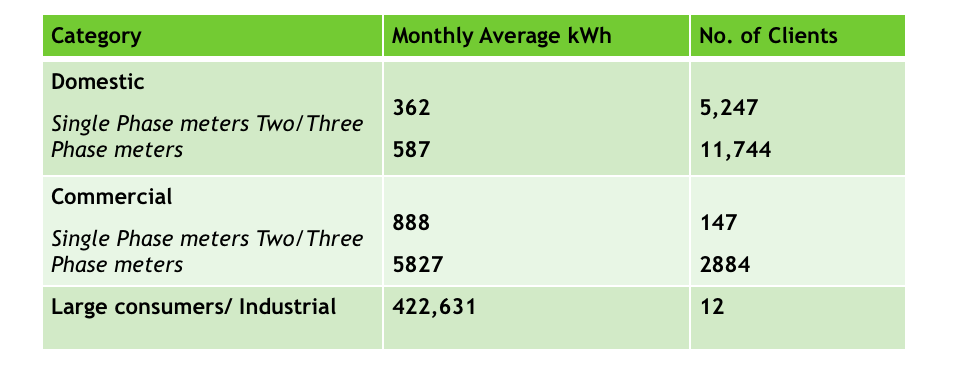
Electrical energy is being produced and distributed by N.V. GEBE, which is a fully owned Government company. In December 2013 all the shares were transferred to the government of Sint Maarten as the only shareholder. N.V.GEBE is the sole supplier of electrical energy according to the energy concession of July 16, 2010, nr. 644 and will expire after 25 years. The electricity tariffs consist of a base rate (set by Government in 2011 at NAf 0,25 – 0,29 per kWh) and an adjustable fuel surcharge which fluctuates every month in which the actual fuel costs are passed on to the consumers.
N.V. GEBE has one power station located in Cay Bay with a total installed capacity of
97.3 MW of diesel generation. Currently the peak load is around 50 MW and the annual consumption of electrical energy is 372,671,233 kWh ( 2013). Total fuel consumption in 2013 was 82,6 million litres, and the average fuel efficiency for N.V. GEBE 32,7%. These figures do not include line losses in delivering power to the customers (estimated at 9%).
Major issues that need to be addressed in the energy sector include:
- Improvement of fuel efficiency.
- Improvement of the Utility’s efficiency.
- Reduction of the power system losses.
- Reduction of (air) pollution.
- Improvement of the power system’s reliability
In addition to the imported fuel for N.V.GEBE, additional fuels are imported for aviation fuel (60 mln liters/year), bunker C, diesel and LPG (for cooking: 4 mln. lbs/year). Sol Antilles N.V. is N.V.GEBE’s fuel supplier, SOL Antilles N.V. and Chevron/Texaco are the island’s suppliers of gasoline and diesel, estimated at around 18 Million liters in total. There are some other fuel suppliers for services to cargo vessels, yachts and cruise ships, (e.g. NuStar’s barges from Statia).
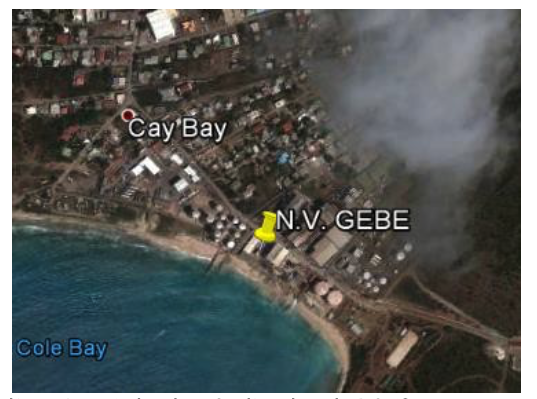
Legislation & regulatory framework
The current Electricity concessions Ordinance (AB 2013, GT no. 147) and the Electricity Concession of N.V. GEBE reflect provisions and regulations already containing the option of granting concessions to corporations for producing power by waste incineration, gasification or with other renewable energy sources. Also small scale producers using renewable energy sources for their own usage – but only up to a maximum of 500 kVA (~ 450 kW) - are allowed in the Electricity Concessions Ordinance. The current N.V. GEBE Electricity Concession requires only 2% of all energy to be produced rom renewable energy sources. Electricity Tariffs are established by the Government, but a Tariff Setting Methodology as well as targets on improvement of efficiency and productivity still have to be developed.
The current ordinance allows Individual Power Producers to produce electricity, but they cannot sell that electricity to any other entity than N.V. GEBE. Past analysis indicated that a regulatory body needs to be established to oversee the energy market, to ensure “just and reasonable” pricing, equitable access to infrastructure, good quality service and security of supply.
National Energy Policy
Sint Maarten developed a National Energy Policy (NEP) in 2014 that aims to mitigate the impact of energy use on the environment while reducing electricity tariffs. The main issues and actions addressed in the policy include moving away from fossil fuels; developing a country-wide energy efficiency program; promoting renewable energy, smart grids, and alternative fuels; and introducing a regulatory framework for the power sector.6 The current Electricity Concessions Ordinance grants concessions to corporations for producing power by waste incineration, gasification, or with other renewable energy sources for their own use but only up to a maximum size of 450 kilowatts (kW). Independent power producers are allowed to produce electricity and sell it using a power purchase agreement to NV GEBE.6 The NEP highlights the need for establishing a regulatory body to oversee the overall energy market, energy pricing, equitable access to electricity, and energy security. The NEP also encourages distributed renewable energy through net metering and utility-scale renewable energy integration using feed-in tariff tools.6 The introduction of country-wide energy efficiency programs has been promoted through energy audits and energy-efficient lighting technologies.
- Promot access to secure, affordable, clean and sustainable energy services as a key driver for poverty eradication and inclusive growth, with a special emphasis on the use of local energy sources;
- Foster greater use of renewable energy technologies, energy efficiency and promote low emission development strategies;
- Promote energy security through diversification of sources and routes and emission reduction
- Improve markets and foster energy interconnections and trade.
Optimum Energy Mix for Sint Maarten
The results of research undertaken for the 2014 Policy presents the following renewable options that can potentially be used and practically implemented in Sint Maarten.
Solar Energy
Most commonly used solar technologies are solar thermal (hot water heating) and solar photovoltaic (PV electricity). Solar energy varies based on sunrise, sunset and cloud conditions. But solar systems output can be modeled very accurately based on the timing of sunrise and sunset and on predicted weather conditions.
Solar hot water heaters: There is a large potential for fossil fuel savings by replacing existing hot water systems with solar hot water heaters. Efficiency of the systems can run as high as 80%, with a payback time of less than 5 years. It is estimated that about 14 % of the average home’s electric consumption is for hot water use, resulting in an average fuel saving of 300 liters per household1.
Commercial solar hot water systems in for the average 100-room hotel can save over USD 166.000 annually.
Photovoltaic (PV). Advances in solar photovoltaic (energy generated by solar panels) has reduced the cost of systems significantly over the last few years, and cheaper technologies are coming out almost every day. The solar energy generations works by converting sunlight directly into electricity. Due to land shortage, it is strongly advised that the focus for Sint Maarten is on rooftop solar panels for households and commercial buildings, small scale energy production, on schools, government buildings, hospital and other larger commercial buildings. Also solar covered parking areas are very feasible for Sint Maarten, especially if combined with charging systems for electric cars and buses. Annual electric savings for an average 20 solar panel system per household for a total output of 4 kW would amount to USD 3,600.- savings per year with a payback time with current energy prices of 4 to 5 years. Annual fuel savings for N.V.GEBE would amount to roughly 3,000 liters per household.6 Coupling rooftop solar panels with large scale generation options can result in all of Sint Maarten’s electric supply being provided by renewable energy. PV also allows new forms of revenue by feeding back into the grid: Prosumer, consumers who also generate energy.
Wind Energy from wind turbines
Wind power is a very well developed technology with worldwide experience. The most likely location for wind development on Sint Maarten is offshore because of limited space onshore, however possible locations must be further explored, including an Environmental Impact Assessment for every potential location. New turbines using direct drive technology and better foundations promise reduced cost of offshore wind. The gravity based and compact foundations will minimize disturbance of the seabed and marine life and can reduce overall installation costs. Sea conditions and shallow waters make the installation of offshore wind a good candidate for reducing the dependency on fossil fuels. The key issue is the ability of the units to withstand hurricanes. There are specifically developed models for hurricane-prone areas.
The wind resources of Sint Maarten (wind speed and profiles) hold the promise of wind power production with better capacity factors than almost anywhere else in the world. But wind energy varies significantly due to cyclic nature of wind conditions. The production from wind power requires the use of actual measured wind data, and requires two years of wind measurement, so electric output of the wind units can be projected based upon configuration, height and size of the turbines. The new generation of wind turbines generate 5 to 8 MW per turbine, and produce during 63% of the time at least 80% of its capacity. A larger project would likely require some method of storage to be compatible with the load profile of the electric grid.
Waste to Energy
A planned Waste to Energy Plant (8 – 9.3 MW) has been promoted for a years with a build, own and operated Individual Power Producer (IPP) model. It has shown that tariffs to be paid to the IPP are not as favorable as tariffs for wind and solar power. The leveled costs of Energy for the Waste to Energy project are very high compared to the average cost of energy. But, in addition to reduction in consumption of fossil fuels, the Waste to Energy project resolves the critical problem of lack of landfill space and limitations of the existing landfill on Sint Maarten.
Geothermal
Geothermal energy technologies utilize natural heat produced from the earth and convert steam and hot water to electricity as the geothermal source rotates a turbine connected to a generator.
Although Sint Maarten does not have the potential for geothermal energy for electric production, the islands of Saba and St. Eustatius have a high potential for geothermal energy. Sint Maarten, St.
Eustatius and Saba have recently taken the initiative to research and develop the use of geothermal energy. Because of the small scale of Saba and St. Eustatius, it is interesting for them to have Sint Maarten participate in this initiative. Sint Maarten, in turn, would benefit from the lower energy prices. It is estimated that Saba can support a 100 MW or larger geothermal project based upon preliminary investigations and issues of land mass utilization. The plant has to be interconnected via a 60 km submarine cable capable of moving 100 MVA of power. Estimated cost for a submarine cable would be USD 25 mln7. Advantage of geothermal energy is that it can be delivered under base load conditions, at reasonable tariffs, and it is available 24/7.
Liquid Natural Gas / Liquid Petroleum Gas
Conversion of the Heavy Fuel Oils generators to Liquid Natural Gas (LNG) or Liquid Petroleum Gas (LPG) will reduce the carbon footprint drastically as well as a reduction of emissions. However, LNG/LPG is an intermediate solution: it is still a non-renewable, finite energy source, even though studies show that the world’s supply is enough for the coming 60 years. The expectation is that price for LNG will be favorable for the next 10-15 years, especially because of the controversial winning of Shale gas in the USA. But in the long term availability and pricing are still an issue.
The conversion of the engines to LNG needs a considerable investment with a proportional payback period. Converting an engine to operate on gaseous fuel improves fuel efficiency in three ways:
- Natural gas burns efficiently – highest energy content fossil fuel.
- Natural gas burns cleanly – lower maintenance costs and emissions, cleanest fossil fuel.
- Natural gas is attractively priced – more power for less money: only ± 20% of the HFO price.
Energy Snapshot of Saint Maarten and Saint-Martin (French side)
An interesting comparison between the two sides of the island (2015) was reported by the US National Renewable Energy Laboratory (NREL). By law, Saint-Martin’s residents pay the same electricity rates as all other French citizens, with utility rates starting at $0.12 per kilowatt-hour (kWh) for residential customers. For Sint Maarten, the equivalent rates are roughly $0.35/kWh. Like many islands,
Saint Martin is highly dependent on imported fossil fuels, leaving it vulnerable to global oil price fluctuations that directly impact the cost of electricity. The electrical networks serving the two sides of the island do not regularly operate on an interconnected basis; however, a single line allows energy exchange in case of emergency.
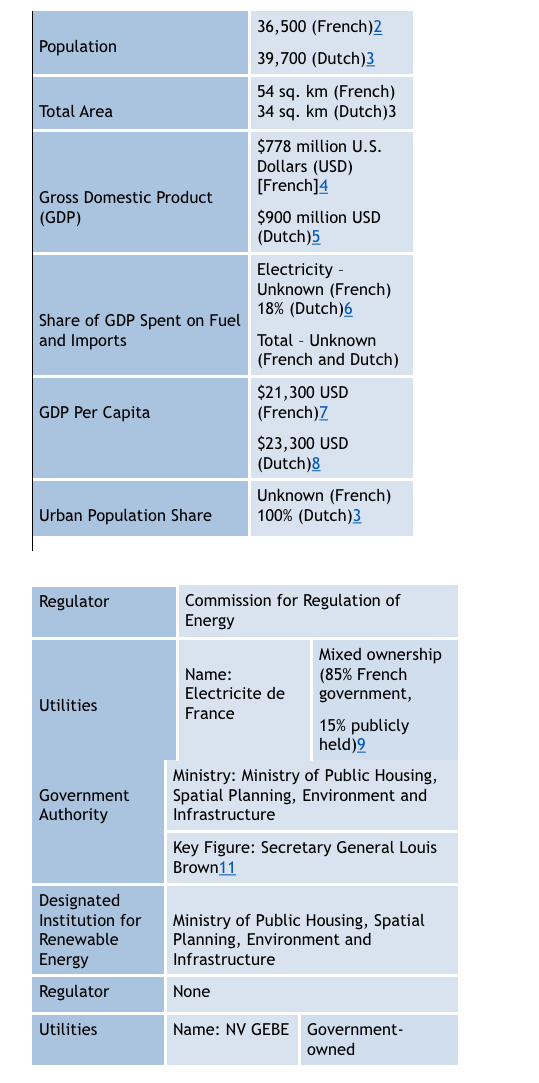
Electricity Sector Data
Electricite de France (EDF) manages power generation and distribution in Saint-Martin and has a total installed capacity of 52.9 megawatts (MW), a peak demand of 32.2 MW,12 and connects 88.23% of the households in Saint-Martin to the utility grid.13 EDF also has 1.44 MW in solar photovoltaic (PV) installations.12 EDF has different tariffs for low- and high-voltage residential, commercial, and industrial customers. Saint-Martin has lower tariffs than other Caribbean island countries since it lies under the jurisdiction of Commission for Regulation of Energy, which also regulates EDF’s operations in mainland France and its other overseas territories. An important aspect of this jurisdictional overlap is that electricity rates are required to be equalized throughout France and its overseas territories despite much higher costs of production in some overseas regions.
The Sint Maarten power production overview was presented earlier and is compared to the Saint Martin side below.
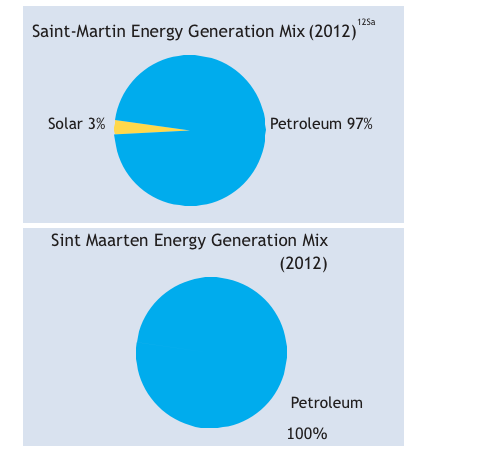
Saint-Martin has developed an action plan that promotes production of electricity from renewable energy sources on the island to reduce energy dependence, diversify energy production, and promote sustainable development. Recommended actions include conducting feasibility studies to understand renewable resource potential on the island and developing financial incentives to encourage uptake of renewable energy.10 The plan also emphasizes the need to raise awareness of energy conservation among individuals and businesses through communication campaigns.
Energy Efficiency and Renewable Energy Planning on the Near Islands
Renewable energy in Saint-Martin makes up an increasing share of energy generation. Per EDF’s 2013 report, 46 PV installations were connected to the network for a total capacity of 1.44 MW.12 EDF has further plans to develop PV plants that will increase the share of renewables in the energy generation mix—total renewable generation in 2020 is planned to reach 25 gigawatt-hours, or 10% of the energy generation mix.
Sint Maarten has been discussing plans to implement an 8-MW waste-to- energy (WTE) power plant for a number of years. Recent studies suggest that renewable energy has high potential to displace fossil fuel generation, particularly using onshore wind, solar hot water heating, residential PV, and commercial PV. The neighboring islands of Saba and Sint Eustasius also have high potential for geothermal energy and have undertaken a collaborative research and development initiative with Sint Maarten to explore it. Based on early studies, Saba has the potential to set up a 100-MW or larger geothermal generation project, which could then be interconnected to Sint Maarten via a 60-kilometer submarine cable.
Opportunities for Clean Energy Transformation
Both sides of Saint Martin have valuable wind and solar energy resources that can be integrated into their existing electricity generation infrastructure. Sint Maarten is also exploring other renewable energy sources, mainly WTE and geothermal energy, to diversify its energy generation mix. To leverage these renewable energy resources, however, the island nations must continue to reduce policy and infrastructure barriers.
Regional and international energy issues
The cost of crude oil is volatile and is expected to rapidly increase in the years and decades to come due to the increasing world demand, depletion of fossil fuels, global speculations on oil prices and the limited production and refinery capacity. All these factors have an upward effect on fossil fuel prices.
The aforementioned issues have not only a direct impact locally. Throughout the Caribbean, the islands are experiencing similar challenges, and have similar reasons for high electricity prices:
- Small economies of scale.
- The islands’ dependence on imported fuels.
- Each island has an isolated grid which leads to monopolies, with a single utility company on each island responsible for production, transmission, and distribution of electricity.
- Simple production technology and lack of competition means that utilities largely pass on their only variable cost—fuel—to their customers via a simple surcharge. As oil prices have increased in the last decade, however, this situation has led to dramatic rises in the price of electricity.
- No available funds to execute Renewable and Alternative Energy projects.
- Insufficient awareness of energy consumption and its’ effects by the population.
- Challenge to detect the optimum mix between Fossil Fuel generation, Renewable Energy sources and Storage Capacity.
However, regionally there are multiple opportunities and initiatives in the field of alternative, green and renewable energy of which Sint Maarten can make use of:
- French side (St Martin) cooperation.
- Saba and St. Eustatius interconnection-Geothermal.
- LNG/LPG from regional suppliers.
- Experience of other islands with Renewable Energy (Aruba, St. Lucia).
Several islands in the Caribbean, such as Nevis, Jamaica, Barbados, Curaçao, Aruba, Bonaire and Saba, have already started with using alternative energy sources in order to generate energy. For instance, Bonaire is in the process of building a wind turbine park that will provide a 100% energy capacity for the island. Saba and St. Eustatius on the other hand are exploring the possibilities of geothermal energy. Drilling for geothermal energy is scheduled to start in Saba and it is estimated that the energy generated would be 250-300 Megawatts. Saba’s current usage is approximately under two Megawatts, subsequently giving Saba the opportunity to export the geothermal power via submarine interconnection cables to other surrounding Caribbean islands.
Some islands in the Caribbean have already started with their own sustainable energy policy plans, but there are still quite a few without a policy and/or legislative framework in place. Islands with National Energy Policies are: Anguilla, Antigua & Barbuda, Barbados, Bermuda, Bonaire, Cayman Islands, Curaçao, Dominica, Dominican Republic, Grenada, Haiti, Jamaica, Martinique, Montserrat, Puerto Rico, St. Kitts & Nevis, St. Lucia, St. Vincent & The Grenadines, The Bahamas, Trinidad & Tobago, Turks & Caicos Islands.
DRINKING WATER GENERATION AND SUPPLY
Caribbean Desalination Association https://www.caribda.com/
Seven Seas Desalination in SXM http://sevenseaswater.com/en/news/seven-seas-water-new-water-1-mgd-plant-goes-into-operation-in-st-maarten
https://www.betterworldsolutions.eu/desalination-solutions-in-the-caribean/ Desalination Solutions in the Caribbean
Desalination is not new to the Caribbean, and extracting clean water from seawater is becoming an increasingly integral part of the region’s search for water security. Since 2007, 68 new desalination plants have been built across the Caribbean, which now boasts an installed capacity of 782,000 cubic metres of purified water per day, according to the Caribbean Desalination Association.
St. Martin as well as St. Thomas and the British Virgin Islands, , are almost entirely dependent on the technology for their domestic water supply. The public-private-partnership formed between Seven Seas Water and the Government of Sint Maarten dates back to 2008. At that time, Seven Seas Water won a tender to construct and operate a new 1 million gallon per day seawater reverse osmosis facility at Cupecoy, and to update and operate the existing 3.5 million gallon per day seawater reverse osmosis facility at Cay Bay. In late 2012 amendments were made to that Water Supply Agreement to keep up with increasing demand.
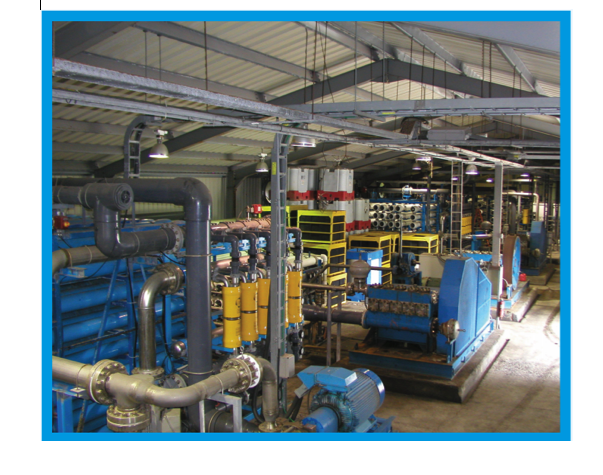
In 2007, several factors were contributing to prolonged water shortages on St. Maarten, including increased tourism and population growth, as well as operational inefficiencies at an existing water facility. An immediate increase in supply was required in order to meet the present demand and mitigate the potential for future water shortages. In the midst of this prolonged water shortage, Air Fin Holding St. Maarten N.V. (a wholly owned subsidiary of Seven Seas Water) won a tender to provide a new 1,000,000 gallons per day (GPD) (3,785 m3/d) Seawater Reverse Osmosis Plant (SWRO) and update and operate the existing Cay Bay SWRO plant for the St. Maarten Government (GEBE).
The Cay Bay plant was initially contracted to produce 3,564,000 GPD (13,489 m3/d) but the outdated and inefficient plant was only producing an average of 2,800,223 GPD (10,598 m3/d) and would require a thorough overhaul to restore its capacity and improve efficiency. Seven Seas Water provided a solution that required no up-front capital investment from the government of St. Maarten. In under five months from the time the water contract was signed, a state of the art 1 million gallons per day (3,785 m3/d) SWRO desalination system was constructed at Cupecoy under a build-own-operate, and transfer (BOOT) arrangement where Seven Seas Water designed, constructed, and currently maintains the new plant. In a true
Seven Seas rehabilitated the Cay Bay facility to produce over 3,500,00 GPD (13,247 m3/d) and greatly improved the efficiency with a system redesign which cut power costs by more than 30%. The decreased power demand reduces carbon and other emissions, freeing up valuable resources and making the process significantly more environmentally friendly. In the process of providing St. Maarten with a reliable supply of 4,500,000 GPD (17,032 m3/d) and reducing the power consumption, Seven Seas Water was able to significantly reduce the cost of water to St. Maarten as well.
In 2013, Seven Seas Water commissioned the newest Salt Water Reverse Osmosis (SWRO) desalination plant on St. Maarten, in Pointe Blanche, after months of construction. Seven Seas Water and GEBE partnered to complete the installation with GEBE overseeing the electrical and hydraulic installations and Seven Seas Water constructing the seawater intake and the SWRO plant.
New Designs for Climate Resilience
To supply the plants with (feed) sea water, an intake system was built at the end of the Cargo quay. The intake consists of suction pipes in the sea that run to a concrete bunker type pump house, a seven hundred meters long underground discharge line to the plant(s) in the Yellow Building and a GEBE transformer station at (part of) the pump house.
The design, in particular of the sea water intake system, factored the need to withstand extreme Hurricane and storm conditions and the corrosive sea water environment at the end of the quay. The feeder water pump house and its transformer building, including the roof, are built with adequately reinforced cast concrete. The intake lines are high density poly ethylene pipes (hdpe), for high operational pressure conditions. The feeder line is of the same hdpe material and laid underground on the harbour cargo to avoid puncturing or damage by the cargo and cruise ship are for many good reasons. The decision to choose for the alternative open sea intake was necessary because using deep wells near the building would not perroduce the required volume of feed water.
Post Irma Response
Within 1 month post Irma, the drinking water supply on the island of St Maarten was increased by 60,000 litres a day. This clean drinking water was available to residents and drawn directly from a tank at Festival Village. The installation of the reverse osmosis system that purifies the water was commissioned by the Dutch government.
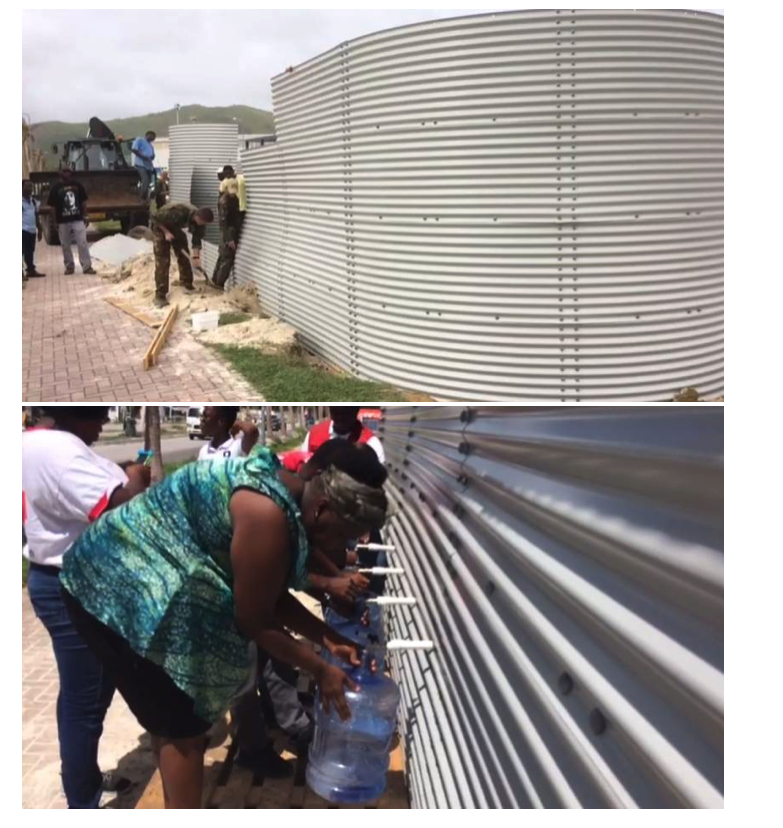
Local residents were able to collect water in containers handed out on site by Red Cross staff. Water tanks were also transported to other areas of St Maarten so residents would not have to walk more than 500 metres to access clean drinking water. Three weeks after Hurricane Irma hit, local drinking water company NV GEBE had reconnected almost all of the island’s households to the water mains. However, in some areas the tap water was not yet safe to drink.
To provide safe drinking water while these repairs are ongoing, the Ministry of the Interior and Kingdom Relations and the Ministry of Infrastructure and the Environment commissioned the installation of this reverse osmosis system. The Dutch army helped fit the system with hurricane-proof cladding. In addition to the distribution point at Festival Village, water tanks will be placed at three locations in Belvedere, Dutch Quarter and the harbor. Twenty water tanks and five trucks for transporting water to the areas affected were shipped on HNLMS Karel Doorman.
Financing Drinking Water Post Irma
The Minister of VSA, who is responsible for the supply of safe drinking water, began an investigation into the financial situation of the government’s position as owner of the public water supply as part of the post-Irma assessments. Damage to the drinking water distribution system caused a significant decrease in water consumption and it was discovered that the after effect of Irma would cause government to lose a projected Naf 4 million for 2018 compared to previous years balance sheets. Because there was a Water Purchase Agreement with Seven Seas Water, Government was obligated to purchase on a monthly basis a minimum amount of water from the company. With consumers not able to access the drinking water, they were not going to continue to pay for services that were not available and in particular large consumers would not be continuing to pay water bills and Government was going to experience a significant loss of revenue and consequent deficit.
The VSE Minister and the Council of Ministers drafted amendments to save several million guilders over the next several years and beyond. Together with the Minister of VROMI these amendments were agreed to with Seven Seas Water.
Saint Martin (French Side
Recently, the French Saint-Martin made the decision to unify its previous 3 outsourced public service contracts and award the contract to manage this new water service to Saur for a period of ten years, effective from December 2018. The service will be used by 15,000 subscribers, which equates to a total of 35,000 consumers.
With its innovative contract tender, Saur was able to convince the local authority to award it the contract to supply drinking water and manage wastewater services, which were previously handled by another operator. Saur structured its bid around a series of ambitious commitments:
- Network hydraulic performance. Network efficiency was 56.7% in 2017, compared with 63.5% in 2016. The reality of this deterioration means that nearly half of all the drinking water produced never reaches the taps of consumers, and is therefore not billed. With an ambitious leak reduction and pipeline replacement program similar to the one already implemented on Saint-Barthélemy. Saur commitment to improve efficiency by more than 20 points by the end of the contract period, to deliver on a target of 79.6% by 2028.
- Treatment plant performance. Saur has proposed a comprehensive diagnostic analysis of the 5,000 m3/day Galisbay desalination plant, which was severely affected by hurricane Irma in September 2017, and to make significant technical improvements. In terms of wastewater treatment, the Saur proposal is to introduce optimized central operational control of six wastewater treatment plants, all of which are located on the coast: four were damaged by Irma, and two – Oyster Pond and Quartier d’Orléans – were entirely destroyed. The new 18,000 population equivalent Quartier d’Orléans plant is due to be officially opened during 2019, as is the Friar’s Bay plant, which will be totally replaced. Very close attention will be paid to the quality of treated water discharged into the sea.
- Customer relations performance. Saur has given its commitment to completely overhaul the management of the 15,000 drinking water subscribers and 10,000 wastewater services subscribers, as well as the entire inventory of assets. A significant amount of work will also be done to improve the management of unpaid bills, which is currently running at 20% and therefore puts a significant strain on the profitability of the service. The target is to reduce the level to 5% by 2028 by focusing particularly on helping families in financial difficulty using the Pass’Eau social pricing scheme. The introduction of remote meter reading by the end of 2019 will ensure that only actual consumption is billed (monthly readings and quarterly bills), with no more estimates and more frequent bills in response to the needs of aparthotels.
Key figures for water supply and wastewater management services on Saint-Martin
Water supply: 1 desalination plant (capacity of 9,000 m3 per day) 6 reservoirs (total storage capacity of 16,000 m3), 6 pumping and pressure-boosting stations, 141 km of supply pipelines and 55 km of connections, 15,000 subscribers and 1.3 million m3 of water sold.
Wastewater management: 68 km of drainage pipelines (49 km of separate gravity-feed and 19 km of discharge network), 29 pumping stations, 6 treatment plants, 10,000 subscribers, 960,000 m3 of wastewater treated and 4,000 private off-mains wastewater installations.
Environmental Concerns
Environmentalists have been raising concerns over the impacts of large-scale desalination on marine life. In particular, open intakes of seawater can cause fish and other larger organisms to become trapped. In addition, huge amounts of power are required to operate commercial-scale desalination – power that is often produced by importing expensive fossil fuels. This dependency on expensive fuel is – also of concern in terms of green-house gases emissions. These issues are examined below.
Key Issues for Seawater Desalination in California: Marine Impacts 2013, Heather Cooley Newsha Ajami and and Matthew Heberger.
Desalination Impacts from Pacific
Desalination, like other major industrial processes, has environmental impacts that are not well understood. These impacts include desalination plant construction and long-term operation including the effects of withdrawing seawater from the ocean and discharging the highly concentrated brine. Environmental impacts are also indirectly associated with the substantial use of energy, Modern seawater reverse-osmosis desalination plants, such as those active on Sint Maarten, take in large volumes of seawater, pass it through fine-pored membranes to separate freshwater from salt, and discharge the hyper-saline brine back into the ocean. Seawater intakes generally fall into two categories: direct intakes and indirect intakes.
The intake of seawater from the ocean results in the impingement and entrainment of marine organisms. Impingement occurs when fish and other large organisms are trapped on the intake screen, resulting in their injury or death. Entrainment occurs when organisms small enough to pass through the intake screens, such as plankton, fish eggs, and larvae, are killed during processing of the salt water. Entrained organisms are killed by pressure and velocity changes caused by circulating pumps in the plant, chlorine and other chemicals used to prevent corrosion and fouling, and predation by filter feeders like mussels and barnacles that line the intake pipes and themselves are considered a fouling nuisance (Mackey et al. 2011). Unfortunately, the impacts of impingement and entrainment from desalination plants on the marine environment are not well understood because there has been limited studies over the past 5-8 years.
Minimizing Marine Life Impacts from Intakes
Various technological, design, and operational measures are available to reduce the marine impacts of seawater intakes. Several measures are available to reduce impingement but fewer measures are available to minimize entrainment losses. As a result, habitat restoration is often used to mitigate these losses. For these intakes, there are several design and operational measures that can reduce impingement and entrainment, e.g., locating the intake in areas of low biological productivity, such as in deep waters or outside of bays and estuaries.
Several technologies are available to reduce impingement and entrainment from surface intakes. These measures generally fall into two broad categories: physical barriers and behavioral deterrents. These practices are for the most part adapted from power plant water intake mitigation measures.
Brine Disposal
The seawater desalination process produces two major waste streams: brine and spent cleaning solutions. The cleaning solution, which is produced intermittently and in relatively small amounts, typically contains chemicals used in the cleaning process and contaminants removed during this process. The brine, also referred to as concentrate, is produced continuously and in relatively large amounts. One of the key features of the concentrate is elevated salinity levels, which depend on the salinity of the source water, the desalination method employed, and the recovery rate of the plant. In addition to elevated salinity levels, brine from a seawater desalination plants have the following characteristics:
- Natural Constituents of Seawater: The process of desalting seawater concentrates constituents normally found in seawater, such as magnesium, boron, calcium, and sulfate (Water Consultants International 2006).
- Chemical Additives: A variety of chemicals are used throughout the desalination process. For example, coagulants, such as ferrous chloride and aluminum chloride, are used to remove suspended matter from the source water (Lattemann and Höpner 2008, NRC 2008).
- Antiscalants, including polyphosphates and phosphonates, are added to the feedwater to prevent the formation of scale precipitates and salt deposits on the desalination equipment (NRC 2008). Other chemicals used include biocides, anti-foaming additives, and detergents. Some of these chemicals can be toxic to marine organisms, even at low concentrations.
- Heavy Metals: Desalination equipment can corrode during operations, resulting in the release of heavy metals, such as copper, zinc, and nickel, into the waste stream. While these elements may occur in seawater in trace amounts, higher concentrations can be toxic to the aquatic environment and can impair biological communities (Jenkins et al. 2012, NRC 2008, Water Consultant International 2006).
- Temperature: Desalination plants may produce brine that is warmer than the receiving waters,
Safe disposal of the concentrated brine produced by desalination plants presents a major environmental challenge. All large coastal seawater desalination plants discharge brine into oceans and estuaries. Brine, by definition, has a high salt concentration, and as a result, it is denser than the waters into which it is discharged. Once discharged, brine tends to sink and slowly spread along the ocean floor. Mixing along the ocean floor is usually much slower than at the surface, thus inhibiting dilution and resulting in elevated salt concentrations near the outfall. Diffusers can be placed on the discharge pipe to promote mixing. Brine can also be diluted with effluent from a wastewater treatment plant or with cooling water from a power plant or other industrial user, although these approaches have their own drawbacks.
The impacts of brine on the marine environment are largely unknown. The majority of studies available focus on a limited number of species over short time periods and lack baseline data which would allow a comparison to pre-operation conditions. The laboratory and field studies that have been conducted to date, however, indicate the potential for acute and chronic toxicity and changes to the community structures in marine environments. The ecological impacts of brine discharge, however, vary widely and are a function of several factors, including the characteristics of the brine, the discharge method, the rate of dilution and dispersal, and the sensitivity of organisms.
Despite the long history of seawater desalination plants operating in some regions, data on their ecological impacts are limited. Several recently constructed plants, including plants built in Tampa Bay, Florida and Perth, Australia, have monitoring programs in place to evaluate impacts associated with brine discharge. These studies suggest that the short-term impacts of brine discharge can be addressed through dilution and use of multi-port diffusers. However, additional monitoring is needed to evaluate mid- and long- term impacts.
Source- The environmental impact of the reverse osmosis desalination plant on the immediately surrounding water and coral reef ecosystem in Bonaire, Dutch Caribbean
For several decades, the most promising solutions to the growing shortage of potable water throughout the Caribbean region is the tapping of the oceans through desalination. As the need for fresh water has grown and the technology has improved, municipal desalination has slowly expanded. These islands also house some of the highest concentrations of reefs in the world, and exceedingly little research has been done on the impact of effluent from desalination plants on coral reef ecosystems. Desalination plants release hypersaline water with heightened thermal energy, lowered O2 levels, and a variety of chemical additives. Results of a study in Bonaire, Dutch Caribbean, on the benthic ecology compared coral mortality and reef composition adjacent to the desalination plant. The reef in close proximity to the desalination plant was found to have significantly lower live hard coral, gorgonian, and fire coral cover, and higher sand cover by percent than areas not impacted by the desalination process. The reef adjacent to the plant also showed significantly higher rates of coral mortality, higher salinity, but lower levels of CO2 and nitrates. These results suggested that the desalination plant has a negative effect on the surrounding coral reef ecosystem’s health.
This student research was retrieved from Physis: Journal of Marine Science IX (Spring 2011)19: 57-63 from CIEE Bonaire.
Source. Key Issues for Seawater Desalination in California: Energy and Greenhouse Gas Emissions, Heather Cooley and Matthew Heberger, 2013 Pacific Institute
Energy and Green House Gas Emissions
Removing the salt from seawater is an energy- intensive process and consumes more energy per gallon than most other water supply and treatment options. On average, desalinations plants use about 15,000 kWh per million gallons of water produced (kWh/MG), or 4.0 kWh per cubic meter (kWh/m3).. The actual energy use may be higher, as actual operating conditions are often not ideal.
Energy requirements for desalination have declined dramatically over the past 40 years due to a variety of technological advances, and desalination designers and researchers are continuously seeking ways to further reduce energy consumption.
The high energy requirements of seawater desalination raise several concerns, including sensitivity to energy price variability. Energy is the largest single variable cost for a desalination plant, varying from one-third to more than one-half the cost of produced water (Chaudhry 2003). As result, desalination creates or increases the water supplier’s exposure to energy price variability.
The high energy requirements of seawater desalination also raise concerns about greenhouse gas emissions. Desalination – through increased energy use – can cause an increase in greenhouse gas emissions, further contributing to the root cause of climate change and thus running counter to greenhouse gas reduction goals. While there is “no clear-cut regulatory standard related to energy use and greenhouse gas emissions,” (Pankratz 2012) there are a variety of programs and policies that may be considered when developing a desalination project.
There is growing interest in reducing or eliminating greenhouse gas emissions by powering desalination with renewables, directly or indirectly, or purchasing carbon offsets. In California, USA, there is a strong move to see desalination plants that are directly powered by renewables. Another option is that project developers will develop renewables in other parts of the state that partially or fully offset the energy requirements of the desalination plant. Offsets can also reduce emissions, although caution is required when purchasing offsets, particularly on the voluntary market, to ensure that they are effective, meaningful, and do no harm.
Policy and planning should also consider whether there are less energy-intensive options available to meet water demand, such as through conservation and efficiency, water reuse, brackish water desalination, stormwater capture, and rainwater harvesting.
TRANSPORT AND TRAFFIC
The road network on the island is not suited for the heavy traffic volumes it has to cope with today. This has resulted in a situation where accessibility of locations with economically vital functions is under pressure (DTV, 2011). In order to achieve sustainable economic development, it is critical to decrease travel time costs by means of spatial/physical measures and improvement of the traffic safety. Furthermore, the value of travel time which refers to the costs of time spent on transport, including waiting as well as travel, is significant for Sint Maarten. Although detailed numbers for Sint Maarten have not generated, the potential economic benefits by decreasing travel time would be substantial. Another important consideration is that tourists visiting Sint Maarten have no desire to languish in traffic jams.
Traffic problems are magnified when there are larger number of bigger cruise ships visiting the port. Adding 20,000 passengers and more than 5,000 crew (when there have been 5 or more ships docked in one day) almost paralyzes the road network with vans, buses and taxis accommodating the tourists.
Proposals are pending to expand the main road network, improve the secondary road network, and improve public transportation services and provide for more efficient and less disruptive parking.
Main road network
Vehicle traffic on Sint Maarten has risen dramatically in the past decades. The main road network, with few exceptions, has hardly changed since the 1960’s and the capacity of the road network is significantly inadequate. Political and public pressures continue to mount for developing a better road network.
A proposed expansion of the main road network back in 1993, the Comprehensive Road Network Plan, included the construction of a number of new road connections (links) in order to form a coherent system of arterial roads (DTV, 2011). A large part of the proposed expansion of main roads based on this 1993 plan never materialized. Of particular importance is the improvement of the east-west connection. The east west connection connects vital locations (Airport, Philipsburg and the Harbor) and is vulnerable since it depends on a very limited number of (main) roads. However, the updated main road network now includes the completed new Link 9 the Causeway Bridge over Simpson Bay Lagoon.
All new main roads should be developed in accordance with design standards pertaining to their function of conveying relatively large volumes of through traffic with a minimal of intersections (which have to be properly designed) and access to frontage properties. Furthermore safe facilities for slow traffic (pedestrians and cyclist) are required.
High priority links necessary to alleviate congestion at key traffic bottlenecks.
- Link 1, phase 3: final phase of the alternate route from Philipsburg to Cole Bay, alleviating congestion at the Brouwers Rd., Union Rd, Welfare Rd intersection;
- Link 2: Alternate route from Philipsburg to Cul de Sac avoiding and alleviating the congestion at Bush Road and the congested Churchill Roundabout area;
- Link 3, this road will alleviate the heavily congested Walter
- Nisbeth Road and the southern section of A.T. Illidge Road. Furthermore it will also create a physical barrier in order to halt further land reclamation from the Great Salt Pond;
- Link 4: Upgrading and expansion of Alexis Arnell Blvd. to serve as an alternative to the crucial A.J.C. Brouwers Road;
- Link 6: Connection from Weymouth Hills to the Bethlehem area. This will alleviate L.B. Scott Road to a certain extent and provides for an alternative connection between Dutch Quarter/ Middle Region and Cul de Sac. The road will allow for better development possibilities for the Bethlehem area.
Lower priority road segments;
Upgrading of existing main roads
Most of the existing main roads on Sint Maarten are not designed for the amount of vehicular traffic they have to cope with. The alignment, lack of left turn lanes, parking situations directly along the road and numerous driveways connecting to the road are the main problems that impede traffic flow and result in traffic congestion. The upgrading of existing main roads will improve the traffic flow by creating left turn lanes, service/parallel roads, and the improvement of parking facilities along the main roads.
Bicycle and pedestrian traffic
The current infrastructure on Sint Maarten is totally car- oriented. There is a perception that the island has too many cars, certainly in relation to the capacity of the road network. In most locations, proper sidewalks are rare (even in highly touristic areas such as Simpson Bay) and bicycle lanes simply don't exist. Various alternative proposals for walking, cycling, and jogging were repetitively voiced during the various consultations addressing traffic. Facilitating pedestrian and bicycle paths could also contribute to healthy physical activities, safety in the public space and a way for tourists to explore parts of the island (TU Delft, 2008).
A bicycle and pedestrian route network that connects the Greater Philipsburg area with Cul-de-Sac and Welgelegen area seems promising. Such a network connects the main commercial and public service clusters with major residential areas. The physical characteristics of this area are favorable for the realization of a bicycle route network; there is quite some space available and the area is rather flat. Furthermore, the realization of the new Link 2 provides an inner circle for walking and cycling as part of the Ring road (Link 3). A pedestrian and bicycle route network around the Southern section of the Simpson Bay lagoon could be an interesting route for both commuters and tourists.
Public Transport
Sint Maarten has a privately run public transport system with minibuses. This is an affordable and reasonably functioning system, which doesn’t require public investments. This system is however characterized by some disadvantages. The economically less beneficially areas are hardly served -or not served at all- while other routes are overlapping. Furthermore, there are no organized bus schedules.
Improvement of the public transport system both on land and on water could increase the mobility and reduce traffic congestion.
Physical improvements are also part of the solution such as expanding bus stops and separate bus lanes. There is a proposal for a central bus terminal in Philipsburg (possibly on Clem Labega square). Another proposal is for ferry service for commuters and visitors between Philipsburg, Simpson Bay, the airport and Marigot on the French Side. T
Parking
It is important that parking is organized in a better manner because the current limits across all the commercial and business areas. . This will require a combination of different proposed measures, such as central parking facilities (possibly through a public-private partnership) in central commercial areas, such as Philipsburg and Simpson Bay (Kim Sha Beach area) in combination with the improvement of facilities for pedestrians.
Human Health and Traffic Air Pollution
The enormous increase of people using vehicles and the periodic flood of traffic with cruise ship passengers probably leads to respiratory diseases including acute and chronic bronchitis, pneumonia, and cardiovascular diseases. The impact on the economy from these health impacts and lost income has not been estimated for the jurisdiction. The WHO has called for greater awareness of health risks caused by air pollution and this is also a key issue in the Sustainable Development Goals.
LAND USE
As explained in previous sections of this CEA, development over the last decades has taken place without a comprehensive spatial planning policy framework. This development boom has resulted in development that the government has been challenged to adequately manage. There have been many positive developments in terms of building and land use, but also adverse developments impacts on environment and natural resources and the quality of citizen life. This is evident throughout the degradation and destruction of natural areas, incompatible developments space such as commercial and industrial facilities in close proximity to residential neighborhoods, and in inadequate road infrastructure and housing.
Requirements for developing land use planning in Sint Maarten have roots in the National Ordinance Foundations Spatial Development Planning (Dutch: Landsverordening grondslagen ruimtelijke ontwikkelingsplanning (AB 2013, GT no. 403)). The Ministry of VROMI is tasked with the preparation of development plans with zoning regulations (zoning plans) for Sint Maarten in accordance with the National Ordinance on Spatial Development Planning. The development plans or zoning plans regulate and specify where building and other spatial development is or is not permitted, the types of development that may be possible in certain areas and the manner in which the development of the land may be realized and the land may be used.
A Spatial Development Strategy has been developed to provide a coherent policy framework for the period 2016 – 2026, integrating various topics such as: nature, environment, economy, traffic, and housing. For all these topics there is an emphasis on the aspects which are directly related to spatial issues, the competition for space and the need for harmony in the space allocation for often competing needs. This Spatial Development Strategy provides for the establishment of legislation and policy with respect to the built and the natural environment of Sint Maarten. The main aim of this Spatial Development Strategy is to:
- align and structure the often fragmented existing policies in the field of spatial planning;
- provide a basis for the translation into legally binding development plans (zoning plans) on a district level with specific land use and building regulations;
- guide the preparation of more detailed policies and/or action plans for specific (geographical) areas;
- provide policy guidance to spatially coordinate, prioritize and align public investments;
- provide policy guidance for the evaluation of private sector project development proposals;
- serve as a framework for alignment of spatial development with other policy areas of the Government;
- serve as a catalyst for sustainable development from both the public and private sector.
This Spatial Development Strategy focuses on Country Sint Maarten as a whole, but as a small island nation, Sint Maarten will be affected by regional developments as well. In particular the mutual interests and issues with French Saint Martin will be considered in this spatial development vision.
On a broader basis, a National Development Plan (NDP) has been undergoing preparation by the Government. The NDP covers the period until 2030 and aims to set the direction for the strategic long-term development as a country, in first instance based on several United Nations (UN) Millennium Development Goals. The country’s development priorities have been identified into four pillars: economy, environment, culture, and human development.
While the preparation of the zoning plans is approached in a district specific manner, the Spatial Development Strategy is intended as an underlying strategy and a coherent cross-district/sectoral (island- wide) framework to anchor the main themes of the zoning plans. Input gathered during the zoning consultation process identified certain cross-cutting issues that concern the spatial development of the country as a whole that have implications for the more localized zoning plans and are used to rationalize the Spatial Development strategy that can serve as a foundation for the choices made in the more specific zoning plans.
Key Past Studies
- Delft University of Technology, The Hague University, Sint Maarten Government, Urban Synergy (2008) SXMosaic, the world’s island, Sustainable Strategies for St Maarten
- Island Design (2005) Development Perspective Sint Maarten – West
- Ecorys (2012) Economic Outlook Sint Maarten 2012-2013
- SQW (2006) Island Territory of St. Maarten Netherlands Antilles, Economic Diversification Study
- KAW & Bout Overes (2012), SXM Housing Vision, building book
- Netherlands Antilles Environmental Standards Work Group (2007), Air & Sound, Water & Waste Water, Waste, Final Report on Environmental Standards for the Netherlands Antilles
- Nature Foundation St. Maarten (2009), St Maarten Proposed Land Parks Management Plan
Key Past Policies
- Sint Maarten (1993), Comprehensive Road Network Plan
- Sint Maarten (1994), Beach Policy
Stakeholder and Public involvement
In recent years various stakeholder/public consultations were undertaken as part of the Development Perspective Sint Maarten West, Development Perspective Greater Philipsburg and SXMosaic studies. Furthermore, public consultations with respect to the Development Plans (zoning plans) and the National Development Plan gave input for the preparation of the Spatial Development Strategy.
WATER QUALITY
The IIWQ Water Quality Portal is a free visualizer of satellite derived water quality information for worldwide lakes and rivers. To locate Sint Maarten, navigate and zoom into the map using the magnifying buttons and dragging to the desired location.
Numerous factors contribute to surface water quality conditions of Sint Maarten. Water pollution in general can have a wide range of causes and effects. On the island, these are addressed as physical related to hillside steepness and slopes, soil type, vegetative cover, and amount of impervious (cover that does not allow infiltration and percolation of water as it runs over a surface) surfaces. Human activities include the density and distribution of development - where housing construction is permitted, how land development limitations/restrictions are codified and enforced, and the types of infrastructure built and operating to reduce such impacts. The causes and effects are discussed in more detail in separate sections of this report but highlighted here regarding water quality and the relation to public health.
Stormwater runoff is a significant concern. Caribbean climatic conditions contribute to regular torrential downpours that start runoff on the upper slopes of the hillsides. With the gradual disappearance of natural vegetative cover from cutting out hillsides to build housing developments, hotels and resort activities documented over the decades, the amount of stormwater runoff has increased significantly. Building roads higher up on the slopes with impervious surfaces results in greater sheet erosion carrying increased sediment loads with contaminated material (oils, lubricants, graywater, garbage and even human excrement). Drainage grates, underground culverts and pipes and open drainage canals are regularly noted to be cracked, broken or blocked up. With the rapid development of businesses, hotels, houses and services, the stormwater drainage system is regularly incapable of collecting the heavy pluvial flows and dispersing them out of the drainage outfalls along several beach fronts. Around the island, continued land reclamation, sewage, hillside and urban run-off, illegal waste disposal, wrecks, boating and marina activities and the dumping of car batteries all contribute to the pollution of the area’s surface- and groundwater.
The second concern is the large number of septic systems sand cesspits that have failed to contain their human waste. Sewage from these systems , along with waste waters from businesses and homes are directly discharged from end of pipes into the street canals. Due to the increase of human development in the last three decades many buildings have expanded and often new buildings lack proper sewage management. Therefore untreated or poorly treated sewage is often running into the Simpson Bay Lagoon, Salt Pond and other smaller water bodies. The existing wastewater treatment facilities cannot process heavy inflows at certain times and have bypass outflows that contribute to pollutants flowing directly into lagoons or drainage canals.
Unfortunately, the Salt Pond Landfill was built without proper lining and continues to leach contaminants into the subsurface and adjoining Pond waters. The chemical breakdown, dispersal into Salt Pond and eventual transport out to sea have been speculated on for many years. These land based flows find their way into already strained drainage systems across the villages and urban centers. Designed by the Dutch decades ago, most of these systems have degraded due to lack of proper maintenance and infrastructure investment.
Two other tourist related potential water quality concerns include the yachting industry and the cruise ship lines. Although both these entities have overarching legal requirements prohibiting direct waste discharge into near coastal and lagoon waters, there is little surveillance and enforcement to prevent such activities. Overall, there has not been a legal mandate on Sint Maarten requiring water quality monitoring at specific locations for specific parameters to provide proper information to the public about the health of these water bodies. However, over the years several research, academic and NGOs have conducted studies in certain locations to determine water quality conditions.
Health Concerns and Water Quality Standards
The pollution of the primary Bays and Lagoons for Sint Maarten can have a wide range of causes and effects. Oil and fuel spills from pleasure yachts and ships have the potential to kill birds, turtles, fish and other forms of marine life. Increased erosion and sediment deposits from land reclamation, hillside development or the removal of mangroves increases siltation and thereby reduces the oxygen available for marine life. Chemicals and heavy metals which end up in the lagoons can accumulate in the fatty tissues of aquatic animals and may eventually end up being absorbed by people through the consumption of contaminated fish.
Human Health impacts include the presence of enterococcus bacteria which indicate fecal pollution and the presence of other pathogens - bacteria, viruses and protozoa - that can make people sick. Enteroccus generally does not cause sickness on its own, but it lives in the intestinal tract of all warm-blooded animals, and if it is in the water, then that usually means that fecal matter (human sewage or animal sources) is also in the water, and that is unhealthy for people to be swimming or undertaking water contact recreational activities in such conditions. The most common symptoms from exposure to fecal pollution in the water include gastro-intestinal ailments (diarrhea, nausea and vomiting), flu-like symptoms, rashes and skin and eye infections.
Types of pathogens present in wastewater http://www.fao.org/3/w5367e/w5367e04.htm
Wastewater or natural water supplies into which wastewater has been discharged, are likely to contain pathogenic organisms similar to those in the original human excreta. Disease prevention programmes have centred upon four groups of pathogens potentially present in such wastes: bacteria, viruses, protozoa and helminths.
Across North America and in the EU, these are mandated requirements. Water quality standards (WQS) are approved by USEPA that describe the desired condition of a water body and the means by which that condition will be protected or achieved. Water bodies can be used for purposes such as recreation (e.g. swimming and boating), scenic enjoyment, and fishing, and are the home to many aquatic organisms. To protect human health and aquatic life in these waters, WQS form a legal basis for controlling pollutants entering all waters. The USEPA Water quality standards consist of three core components. This includes designated uses of a water body, criteria to protect designated uses, and antidegradation requirements to protect existing uses and high quality/high value waters.
DISASTER RISK MANAGEMENT
References:
- Basic Reference
- Flood risk management in Sint Maarten – A coupled agent-based and flood modelling method. Yared Abayneh Abebea,, Amineh Ghorbanib, Igor Nikolicb, Zoran Vojinovica,c,d,e, Arlex SanchezaJournal of Environmental Management 248 (2019) 109317. Research received funding from the European Union Seventh Framework Programme (FP7/2007–2013) under Grant agreement n° 603663 for the research project PEARL (Preparing for Extreme and Rare events in coastal regions).
Sint Maarten is located within the Caribbean hurricane belt, with the result that it periodically suffers disruption of living conditions, infrastructure, and economic activity, effects that are multiplied by its small size, such that destruction is typically country-wide. Since 1995, Sint Maarten has been exposed to numerous hurricanes whose tracks have passed within 40 kilometers of the country, including Luis in 1995 (Category 4), Lenny in 1999 (Category 3), and Irma in 2017 (Category 5+).
Given Sint Maarten’s location in Hurricane Alley, critical infrastructure is particularly at risk, and alternative services are limited. Power generation is almost completely dependent on imported heavy fuel oil (HFO), and 100 percent of the public drinking water is produced by desalination. When these facilities are damaged (or with damage to constituent factors, such as electricity supply), services are lost until repairs can be completed.
With a population density of approximately 1,180 persons per square km, Sint Maarten is the most densely populated country or territory in the Caribbean and within the Kingdom of the Netherlands. The resulting pressure on land is accentuated by the fact that significant parts of the island are covered by steep-sided hills that do not easily lend themselves to development.
The stormwater catchments and streams in Sint Maarten have several unique characteristics that contribute to the severity of flood- related impacts. As key urban environments of Simpson Bay and Phillipsburg are situated in lowlying areas they are subject to flash flooding from surrounding hills or extreme rainfall events such as thunderstorms. The stormwater channels and streams are inadequate to convey runoff due to their limited design capacity and inadequate maintenance. In addition, hurricane-induced storm surges also cause significant coastal flooding into these areas. The impacts due to hurricanes and isolated heavy rainfalls has increased considerably over the recent years as a commonly recognized effect of climate change. These factors, when combined with increased development on the island are creating increased natural disaster vulnerability and risk.
Vision
To respond to these disaster risks, shape the recovery process, and guide the nation to a resilient and sustainable future, Sint Maarten has developed a comprehensive National Recovery and Resilience Plan (NRRP). Its overarching goal is to restore, secure, and strengthen the well-being of the people of Sint Maarten. The NRRP contains 3 priorities: (1) protect and ensure the basic needs of the people of Sint Maarten—such as food, shelter, health and psychosocial care, education, and livelihoods, (2) ensure that priority projects currently under preparation move forward to ensure Sint Maarten is ready for the next hurricane season and (3) undertake actions to revitalize the economy. These actions include assistance to vulnerable groups to ensure they have a roof over their heads and a basic income to buy essentials, a solution to the debris left behind by Irma and reducing the landfill fires.
In addition, emergency shelters must be repaired or con- structed, emergency services must be restored and fully equipped and public utilities strengthened in preparation for the hurricane season. To restart economic activity, the NRRP recommends immediate support to struggling small- to medium-sized enterprises in their recovery efforts and the reconstruction of the island’s critical infrastructure, including the airport, hospital and hotels. These and other recovery activities should be carried out to ensure long- term sustainability, where possible employing the principle of Build Back Better (BBB).
The expected outcomes from the NRRP are (a) sustain- able recovery of social sectors in all affected communities; (b) restoration of businesses continuity combined with a strategy for fostering and broadening business activity; (c) rehabilitation and reconstruction of critical infrastructure to BBB standards; and (d) strengthening of the country’s readiness to mitigate, respond to and recover from the future impacts of natural disasters and climate change.
Guiding Principles
Efforts to recover and to strengthen national resilience across all sectors must reflect the following principles.
- Inclusive people-centered approach. The people of Sint Maarten must be fully engaged in the actual implementation and monitoring of the recovery and resilience interventions. All NRRP initiatives should reflect and promote gender equity and the social inclusion of the country’s most vulnerable populations.
- Transparency. The NRRP should be implemented in an accountable and transparent manner. Major decisions should be widely disseminated through public media. Key recovery and resilience information must be avail- able in the public domain. The process should involve all critical stakeholders, including the Government of Sint Maarten, the private sector, academia, civil society, unaffiliated citizens, as well regional and international partners. It is essential to recognize the role different stakeholders play in the process and leverage their contributions to ensure common national ownership of the process.
- Sustainability. Sustainable recovery is a process that balances community, economic, and governance needs without compromising the well-being of future generations. Certainly, promoting climate change adaptation and building-back-better principles will foster long-term resilience. Sustainability also strives to ensure that benefits of the NRRP continue well beyond its implementation period.
- Synchronized, multisectoral approach. Truly resilient recovery requires interventions across multiple sectors. Collaboration, coordination, and coherence among government and non-governmental stakeholders should be promoted to build synergies and economies of scale.
- Link to longer-term development. The NRRP should lay the foundation for strengthening national resilience, which in turn will help achieve and safeguard long-term development objectives such as those embraced by the Sustainable Development Goals 2030. While the plan focuses on recovery and resilience from damage caused by the recent hurricanes, it should align with and complement other national plans aimed at the long-term development of the country.
Objectives
The NRRP takes a multisectoral, programmatic approach, aggregating proposed interventions across 18 sectors to achieve the intended outcomes under three recovery and resilience components: community, economy, and government.
COMMUNITY RECOVERY AND RESILIENCE
Housing. Post-Irma assessments note a strong inverse relationship between property damage and income levels. The many needs in the housing sector following Hurricanes Irma and Maria should be addressed through a multi-pronged strategy including repair of damaged housing, increased support for social and affordable housing, upgrading of existing informal settlements to improve disaster resilience, a review of current building codes in the spirit of building back better, and a mortgage guarantee fund to encourage home ownership.
Health Services.Improving the quality and availability of health and mental health services for the people of Sint Maarten is a crucial objective of community recovery. Access to healthcare should be guaranteed throughout the recovery and beyond—including strengthening emergency services through the purchase of ambulances damaged in the hurricanes, expanding psychosocial care, enhancing prevention activities to address potential post-hurricane health impacts and ensuring continuity of health insurance. Increasing the capacity of secondary
This finding is typical in the wake of disasters. For example, even when the financial loss of damaged first-class housing exceeds that of fourth-class housing, the weaker structural integrity of the latter results in greater loss of effective shelter. Hence, the more vulnerable are more likely to find themselves suddenly homeless (and are far less likely to be able to draw on insurance to rebuild). Healthcare services through the construction of a new hospital is also critical as the current hospital is not expected to withstand another hurricane. A new hospital will also substantially increase bed and service capacity in the country, and cater to sister islands Saba and Statia.
Employment, Livelihoods, and Social Protection. Social assistance to address immediate recovery needs, such as providing income support and employment training, is a critical objective. The medium- to longer-term objective is to build resilience, which will include fostering employ- ability in the labor force in key sectors, building in financial mechanisms for income support, the establishment of an unemployment insurance fund as a contingency instrument to cope with economic shocks and stream- lining the delivery of vital social services centered on a community-based approach.
Emergency shelters. Crucial to the sector recovery strategy is addressing Sint Maarten’s need for emergency shelters. An assessment of the country’s shelter needs should be followed by a construction program to increase shelter capacity and reduce the reliance on schools as shelters. In addition, multi-use emergency relocation centers to house families displaced by disaster should be built.
Solid Waste. There is currently limited recycling capacity in the country, and the sole dump is well over capacity, presenting a significant health risk to the people of Sint Maarten (as well as an economic risk with respect to the economy’s prime sector, tourism), as illustrated by the frequent and injurious dump fires. An important immediate objective is to deal with the debris left behind by Irma, address the dump fires and move toward a robust recycling program coupled with alternative waste disposal technology, such as incineration or waste-to-energy. Significant resources should also be directed to upgrading the country’s sewerage network in the interest of public health.
Education. A key objective is to secure safer school buildings and provide for a safe learning environment for the youngest members of the community through a comprehensive school safety framework. Immediate needs include repairing and rebuilding damaged schools to more resilient standards, implementing a food program and strengthening after school programs for vulnerable children and providing psychosocial care to affected students and staff with the ultimate goal of creating a safe learning environment for the youngest members of the community and teaching staff. In addition, to promote labor market entry, the longer-term objective is a trans- formation to a higher educated workforce by means of a local, financially sustainable and high-quality education system with emphasis on the vocational and tertiary infrastructure.
ECONOMIC RECOVERY AND RESILIENCE
Context. The well-being of the people of Sint Maarten ultimately depends on a sustainable and flourishing economy that supports broad employment possibilities. This demands a more resilient economy able to with- stand future shocks.
Business Activity. Reestablishment of business activity, combined with a strategy for growth, will have to include fiscal and social security reform to promote relief. It also must focus on strengthening the country’s main economic pillar, the tourism sector, which accounts for approximately 85 percent of gross domestic product (GDP), employs 44 percent of the formal sector labor force, and contributes approximately $102 million9 of the government’s annual tax revenues.10 Immediate needs include a marketing and communications strategy to secure Sint Maarten’s tourism market position during the recovery phase and a resilience strategy to ensure the tourism sector can weather future storms. In the short to medium term, it will be important to explore options for diversifying the economy of Sint Maarten. One productive approach may be to focus first on a conditional-based incentive framework to cultivate the development of small and medium-sized enterprises (SMEs), which are estimated to employ 57 percent of the labor force.
Macroeconomic Matters. Macroeconomic stability promotes effective stewardship of public and external resources. In such stable environments, public and private economic decision-making and planning are grounded in reasonable expectations with respect to future outputs, prices, taxes, fiscal deficit, and other critical elements, stimulating investment. Sint Maarten must foster eco- nomic investment. Recovery can be stimulated by low-interest rate loans or alternatively subsidizing high-interest loans in the absence of market willingness to provide low-interest loans. In addition, a partial credit guarantee could increase accessibility to much-needed capital in the short term. Whatever the means, it is essential to expand access to investment capital to ensure the country’s eco- nomic recovery.
Infrastructure. A crucial immediate need is to repair and reconstruct Sint Maarten’s critical infrastructure to BBB standards. The hotels, airport, seaport, marina facilities and hospital must be repaired and reconstructed to withstand future disasters and thus ensure strengthened resilience. This includes conducting a coordinated, multisectoral program of targeted interventions to build the resilience of vital utility networks, including the electricity, water supply, and telecommunications sectors. The provision of reliable utility services is key to sup- porting community, economic and government recovery and resilience.
Roads and Drainage. It is also crucial to address recur- rent flooding issues by providing adequate drainage. This will contribute to protecting the environment and road infrastructure, while helping to mitigate health risks and protect assets of affected communities and small businesses. In addition, the construction of the Link 6 evacuation route would provide a key alternative in times of disaster to a third of Sint Maarten’s population.
GOVERNMENT RECOVERY AND RESILIENCE
Baseline. Hurricane Irma exposed shortcomings in national capacity, most prominently with respect to disaster response capabilities, revealing a lack of resilience that magnified damages despite the best efforts of relevant staff. Drawing appropriate lessons, the NRRP focuses on strengthening key areas of governance to better prepare for future disasters.
Disaster Response and Mitigation. A primary objective is to repair and reconstruct first responder facilities and replace vehicles, equipment and communications gear to ensure Sint Maarten’s emergency services are pre- pared for the next hurricane season. A related objective is to improve existing early warning systems, emergency communications systems, and coordination among fire, police, and emergency agencies. In preparing for future hurricane seasons, it will be absolutely critical to involve the community in all aspects of disaster preparedness. This could be achieved through developing a national DRM and climate-change adaptation curriculum and conducting awareness campaigns and emergency preparedness drills at all levels. More broadly, Sint Maarten’s disaster risk management (DRM) apparatus needs to be strengthened. It is highly recommended to establish a National Platform for Disaster Risk Reduction to improve coordination, develop integrated policies, strengthen institutional arrangements for more effective DRM and climate change adaptation and explore options for disaster risk financing.
Financial Capacity. Another objective of the government recovery and resilience process is to strengthen public financial management (PFM) capacity to better track, monitor, and promptly respond to identified gaps. In light of the major fiscal challenges of the government, it will be crucial to modernize the tax system, to improve compliance and collection and to stimulate investment as enhanced tax revenues provide a base for expanded social services and enhanced resilience.
Fiscal Challenges. Because of the impact of Hurricanes Irma and Maria, as well as of deeper and longer-standing challenges, the government has a cumulative budget deficit of $230 million until 2019. This deficit challenge should be addressed to ensure a healthy investment climate for the economy. A Debt Sustainability Analysis (DSA)12 reveals that a budget surplus of 1.1 percent of GDP between 2021 and 2040 would be required to ser- vice the debt incurred to finance budget deficits between 2017 and 2020.
Public Security. Given the public safety and security concerns raised in the aftermath of Hurricane Irma, it is crucial that the justice, public safety, and security systems are strengthened to ensure law and order. This will be accomplished in the immediate and short term through repairing damaged infrastructure, rebuilding the 911 call center, replacing damaged vehicles and equipment and bolstering ICT systems. The failure to strengthen government capacity in the field of security will adversely impact the tourism sector in addition to the well-being of the people of Sint Maarten.
Paradigm Shift: Resilience and Prioritization. The binding fiscal constraint and the imbalance between needs and resources underscores the necessity of a paradigm shift to resilience, a shift from quantity to quality, with fewer interventions at a higher cost per intervention to build-in resilience and sustainability. The underlying concept is simple but radical: fewer but better interventions. At the programmatic level this clearly implicates the centrality of rigorous prioritization, in which existing needs can only be one element of decision-making. This, in turn, clearly implicates the political sphere, which is why widespread consultation and national buy-in are critical to the recovery process.
Data and Capacity Deficits. Two issues are relevant across the components of community, economy, and government, but are discussed here because, in almost all cases, the relevant actor will be some government ministry, department or agency. Sint Maarten has a shortage of actionable data collection and analysis as well as the capacity to immediately address these matters. The lack of capacity is by no means unique to the realm of data. Unfortunately, it applies across sectors countrywide. Considerable thought will need to be given to ways to most efficiently and rapidly address the country’s capacity constraints.
IMPLEMENTATION FRAMEWORK
A well-designed implementation strategy is fundamental to the success of the NRRP. To guide the recovery and resilience building process, an implementation framework will be established to operationalize the NRRP.
This framework will consist of five pillars: (a) institutional arrangements, (b) policy development, (c) a prioritization and sequencing approach, (d) a financing strategy, and (e) coordination, monitoring and evaluation (M&E), and communications mechanisms.
The framework will enable Sint Maarten to identify, prioritize, and sequence interventions that produce a resilient community, economy, and government and will help to develop the institutional arrangements, policies, financing strategy and monitoring, evaluation and coordination systems to support resilient recovery.
The implementation framework has the following objectives:
- To establish institutional arrangements and to strengthen the capacity that is needed to implement the NRRP
- To develop policies and strategies for the identified recovery and resilience activities
- o ensure prioritization and sequencing of proposed interventions
- To identify both public and private sources of financing for NRRP implementation
- To establish strong coordination and M&E mechanisms as well as effective communication with all stakeholders.
Institutional Arrangements
As a small island developing state, Sint Maarten has limited resources and capacity, which poses a severe challenge for the implementation of the NRRP. To strengthen implementation capacity, the Government is establishing a National Recovery Program Bureau (NRPB) that will coordinate recovery and resilience projects.
The NRPB will be responsible for project implementation arrangements and coordination of the NRRP in partnership with the relevant ministries. Until the Bureau is established and adequately staffed, the Interim Recovery Committee will lead implementation efforts.
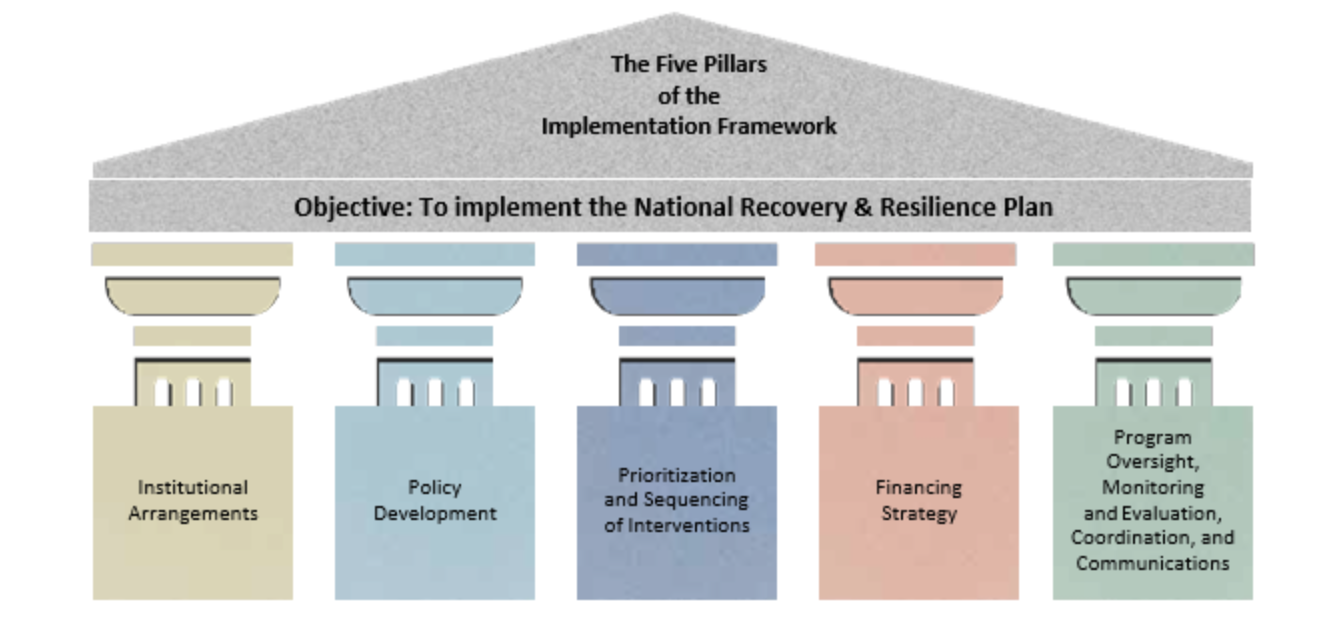
The NRPB will handle technical, administrative, legal, financial, procurement and safeguards responsibilities to ensure effective implementation with technical input provided by the relevant line ministries.
In addition to the implementation of individual projects, there is a need for dialogue, coordination, and capacity building. This requires the NRPB and the relevant ministries to:
- conduct an institutional mapping and capacity study of key institutions, resulting in a comprehensive capacity-building plan
- develop a multi-annual plan for operationalizing the NRRP
- design a fiduciary and operational framework
- establish an institutional repository for continuous updating of the recovery needs database.
Policy Development
Another prerequisite for the successful implementation of the NRRP is the development of policies and strategies to strengthen the impact of the identified recovery and resilience activities highlighted throughout this document. The establishment of these and other policies and strategies will have to be based on close discussions between policy-makers and stakeholders, including planning and financial institutions.
Prioritization and Sequencing of Recovery and Resilience Interventions
The NRRP recommends a wide range of interventions to support recovery and resilience, the cost of which exceeds the funding that is currently available. This requires serious prioritization within and across sectors. A coherent, well-coordinated and transparent prioritization and sequencing process is necessary to promote equitable and demand-responsive recovery across affected communities and to ensure the proper balance between hardware and software.
This prioritization and sequencing process should be iterative and updated throughout the implementation of the NRRP. Priorities should be identified based on the specific needs that are revealed during the different phases of NRRP implementation.
The first step of the prioritization and sequencing process is to verify whether the proposed interventions contribute to the overarching goal of the NRRP, which is to restore, secure, and strengthen the well-being of the people of Sint Maarten. The question that needs to be addressed is the extent to which a proposed intervention helps to restore and secure livelihoods in a sustainable manner.
A second step is to apply agreed-upon criteria that are related to the financing possibilities and the impact of the proposed interventions. The agreed-upon criteria in Table 5 follow the Organization for Economic Cooperation and Development (OECD) Development Action Committee (DAC) standard criteria for aid evaluation. These criteria are universally used for calls for proposals by international development aid institutions (e.g., UN, World Bank, etc.) to prioritize and sequence proposed interventions.
FLOODING AND DRAINAGE

Street floods
Flood Risk Management (FRM) on the island has not been sufficiently developed to cope with potential disasters. Addressing and reducing flood-related disaster risk is a major challenge for the island governments. On the Dutch side, flood control has been concentrated on canalizing and widening of natural gutters and controlling stormwater levels using sluices and gates. Unfortunately, expanding the drainage system to all neighbourhoods of the island has not occurred because of financing limitations. Originally designed by Dutch flood control experts, original design criteria from decades ago, today require re-evaluation and design to cope with the intensified effects of climate change and urbanization. Proper functioning of the SXM drainage collection and redirection system will always require system wide maintenance to remove sediment deposits and upgrade all drains and grates, which does not occur.
Storm drains
In the past decade the Dutch Government recognized that Flood Risk Management should address reducing flood hazards as well as reducing overall exposure and vulnerability. The National Ordinance for Disaster Relief (2010) laid out the “rules and regulations” for disaster preparation and management, referring to immediately before and after the onset of an event. More recently, The government with assistance from UNDP is drafting a National Development Plan (NDP) to manage the spatial development of Sint Maarten. This plan with zoning regulations is prepared and undertaken by the Ministry of Public Housing, Spatial Planning, Environment and Infrastructure (as commonly known as VROMI, a Dutch acronym) of the Government of Sint Maarten. The flood hazard management techniques covered in these plans include maintaining green areas, preserving and enhancing natural gutters and reserving spaces for retention ponds. Other aspects specified in these plans propose managing the exposure and vulnerability to flooding with building codes and floor-height elevations.
National Ordinance for Disaster Relief
The key government agency to manage FRM is VROMI with three relevant departments: Permits, Inspection and the New Projects Departments. The first two departments are responsible for designing, regulating, inspecting and enforcing policies related to buildings, spatial planning, and development. The latter is responsible for the design and implementation of public/government buildings and drainage works. https://decentrale.regelgeving.overheid.nl/cvdr/XHTMLoutput/Actueel/Sint%20Maarten/207446.html
Policies and Regulations
Relevant FRM mechanisms are the Sint Maarten Beach Policy (BP), the Sint Maarten Building and Housing Ordinance (BO), and the Flood Zoning (FZ) proposed under the National Development Plan. As beaches are an integral part of the tourism-based economy, the main objective of the BP is to protect the recreational value of the beaches on the island to ensure that there is no construction directly on the beach to restrict their normal uses. Although the policy was not formulated in relation to flood risk reduction, its implementation can address construction up to 50 m of the strip from the coastline.
Specific recommendations from the Abebea et.al paper are highlighted below.
- Compliance and enforcement by VROMI with the Building and Housing Ordinance can have an important contribution in reducing the vulnerability of residents regarding elevated construction.
- Applying Flood Zoning restrictions and requirements reduces the vulnerability of households, businesses and hotels. However, these “vulnerable and restricted zones” are already built out and applying these policies have little effect on reducing the total flood risk. In contrast to the Building and Housing Ordinance, the implementation of the Flood Zoning building ground floor elevations would be very effective but field observations and expert discussions, indicate the cost to undertake these measures are prohibitively expensive.
- Similarly, the Beach Policy contribution to the overall flood reduction is low since most parts of the Sint Maarten coast, especially where there are sandy beaches, are already built out.
- The simulation models indicate that the most cost-effective flood hazard reduction measures include upgrading channel cross-sections and building coastal flood reduction dykes. Coastal measures are not often considered in Sint Maarten as there is a consensus that the measures may reduce the beauty of the beaches, hurting the tourism economy. However, as shown in the modelling scenarios, these measures are important to reduce the flood hazard unless all exposed buildings are demolished and a strict policy that prohibits any construction along the coast is implemented.
- In summary, implementing hazard reduction measures as well as strict enforcement of the Building and Housing Ordinance have a more important effect to reduce the number of flooded houses
CASE STUDY: SIMPSON BAY
In Cole Bay, Water Quality Research, which was done by the Environmental Protection in the Caribbean (EPIC), the water of the lagoon, the major gutters, streams and pipes were tested. Results of the water quality testing showed high levels of sewage pollution, especially around the Cole Bay area. The water tests showed a high presence of fecal coliform and enterococci spp., indicators of sewage contamination. TA proposed sewage treatment plant will drastically improve the marine environment of the lagoon and it is essential in improving the living environment of the residents in the Cole Bay and Simpson Bay Lagoon area.
The Lagoon and Its Past
The Simpson Bay Lagoon is an inland lagoon on the island of St. Maarten whose Northern part is French territory whereas the Southern portion is part of the Kingdom of the Netherlands. The Lagoon, which is one of the largest inland bays in the Caribbean, is almost completely surrounded by land. The land bordering the Lagoon has experienced intense (coastal) development .
Most development that has occurred over the past several decades progressed unplanned and uncontrolled. As a result the area currently suffers from traffic jams and and waste water pollution.
The Lagoon itself has been reduced 23% in size due to land reclamation associated with tourism-related infrastructural projects. The majority of these developments are currently not connected to any type of (central) sewage treatment facility and much of the effluent enters the Lagoon through the existing groundwater flow and terrestrial run-off. The Lagoon was hit by hurricane Luis in 1995 and many ships seeking shelter in the Lagoon were shipwrecked and never removed. This same set of unfortunate circumstances occurred in 2017 when Irma hit the island and as many as 200 vessels were damaged, sunk or abandoned. Hence the Lagoon is currently littered by a large number of rusting shipwrecks above and below the Lagoon's surface.
Oral accounts describe that the Lagoon once harbored dense seagrass stands (mainly Thalassia testudinum) and that mangroves bordered the Lagoon in many places until the development around Simpson Bay Lagoon started. These mangrove-systems are critical habitats because they provide so-called "nursery habitats" for many commercially important species (e.g. snapper, conch, lobster). Nursery habitats contain characteristics preferred by juveniles of these organisms. Anecdotal accounts from local fishermen suggest that pre- 1970's the Lagoon was able to sustain a small but productive fishery of fish, lobster and conch. Since then developments, logging of mangrove stands and dredging inside the Lagoon have resulted in serious damage to the natural ecosystems in the Lagoon. In combination with general overfishing by local fishermen , the marine fauna inside the Lagoon now represents an extremely degraded version of its former bounty.
Once seagrass beds started disappearing from Simpson Bay Lagoon after the 1970-1980's, space formerly occupied by these species was taken over by green algae with calcified skeletons similar to corals (mainly Halimeda and Penicillus species). These green algae species were still present in 1995 (Aidenvironment/EcoVision, 1995) and their calcified remains can still be found in present day sediments inside the Lagoon. In 2010, most of these species have disappeared as well and have been replaced by a fast growing seagrass (Halophila spp.) and algal species (Hypnea spp.). These three different plant communities indicate that the continued degradation of the Lagoon ecosystem. While plant communities still dominate the marine ecosystem at present, the aforementioned change towards more opportunist ic species will finally result in a so-called microbialization of the Lagoon ecosystem (Dinsdale et al. 2008).
The first signs of such shift towards a microbe-dominated system were observed during the Ecovision studies. These indications included (i) approximately 30% of the benthlc surface surveyed covered by a thick layer of bacteria; (ii) "marine snow", i.e. colonies of bacteria living off particulate organic matter in water column throughout the Lagoon; (iii) release of gas (most likely CO2 and CH4) from the bottom in various areas of the Lagoon indicating unnaturally high abundance and productivity of bacteria in the Lagoon sediments; and (iv) the thick(> 0.80m), largely anoxic layer of silt on basically the entire Lagoon bottom creating the potential for release of toxic substances (e.g. H2S).
Simpson Bay Lagoon Water Quality Conditions
The environmental status in Simpson Bay Lagoon has been investigated over a number of years by several parties. An early preliminary report by Thompson (2005) outlined the causes of pollution and degradation. These included landfilling reclamation, improper development and mangrove destruction to build houses, businesses, marinas, restaurants and hotels. Untreated sewage enters the Lagoon from several districts (Lowlands, Simpson Bay/Billy Folly, Cay Bay and Cole Bay) and the overflowing sewage systems contribute to eutrophication.
A 2006 EPIC sponsored study conducted field assessments across all major gutters, streams and pipes. These sites were mapped and water samples were collected and analyzed at the outlet (land-based) and in the lagoon for sewage contamination including total coliform, fecal coliform, enterococci spp., Staphylococcus aureus, salinity, temperature, pH, chlorine, phosphate, ammonia, nitrate and nitrite. Test results indicated that nearly all the sites that were found to be contaminated with sewage. With the degree of sewage pollution high. At the Mullet Bay there was no sewage contamination detected.
Water quality in the Simpson Bay Lagoon
A thesis towards the degree of land-based sewage pollution on the Dutch side of the Simpson Bay Lagoon
Sietske Lips and Lester van Slooten EPIC 2009 http://epicislands.org/44%20-%20Water%20Quality%20Simpson%20Lagoon_Lips%20and%20van%20Slooten%202009.pdf
More recently there was a study conducted (2010) as part of the environmental analysis for the Link 9 Bridge construction across Simpson bay Lagoon. Construction started in 2012 and was finished at the end of 2013 with the new causeway side opening bridge operation in early 2014.
Inventory of marine natural values in the Eastern Part of the Simpson Bay Lagoon, Effects of bridge-construction for Link 9 in relation to the current ecological functioning of the Lagoon, Simpson Bay Lagoon Authority Corporation (SLAC) Sint Maarten April 21, 2010, EcoVision N.V.
Urban run-off enters the Lagoon from various points especially after heavy rains depositing many pollutants (e.g.: oil, litter, radiator fluid, etc.) into the waters. Wastewater from several businesses (Laundromats, restaurants, etc.) is also discharged into the Lagoon and the public mindlessly dumps all kinds of waste into the Lagoon; car batteries, concrete, garbage, construction materials , etc.
There are two commercial marinas (Simpson Bay Yacht Club and Port de Plaisance) and two marinas providing boat repairs, cleaning, etc. The biggest marina, the Simpson Bay Yacht Club can host up to 132 vessels, while the other marinas are much smaller and have the capacity for 60 vessels . Improper marina housekeeping from boat cleaning, painting and repairs at Bobby' s Marina and Island Water World are believed to be causing negative impacts to the Lagoon.
The removal of mangrove stands around the Lagoon and dredging activities have also impacted benthic marine life. The mangrove destruction removed the natural sediment trapping of sediments washed from nearby hill sides into the Lagoon. Sedimentation has increased accordingly, with negative effects on the Lagoon's marine life and shipping routes. Over the years overfishing of the once commercially harvested species (e.g., spiny lobsters, conch, fish > 30cm) are currently "ecologically extinct" as their populations approach zero due to their low abundance.
All data from
Water quality in the Simpson Bay Lagoon
A thesis towards the degree of land-based sewage pollution on the Dutch side of the Simpson Bay Lagoon
Sietske Lips and Lester van Slooten EPIC 2009: http://epicislands.org/44%20-%20Water%20Quality%20Simpson%20Lagoon_Lips%20and%20van%20Slooten%202009.pdf
